Home Explore France Official Tourism Board Website
- Explore the map

A SPIRITUAL JOURNEY
Spiritual Tourism

Reading time: 0 min Published on 4 January 2023
These spiritual places are recognised for their international importance, and are often labelled as UNESCO World Heritage Sites. The shrines include world-renowned places of worship such as Lourdes or the Mont Saint-Michel, as well as smaller shrines and cathedrals. Sanctuaries and Tourist Offices share a common aim: to ensure the best possible welcome to travellers searching for spirituality, wellbeing, culture. Each destination is unique, with its own traditions, architecture, food and a wide range of activities available nearby. From spiritual retreats to Christian pilgrimages, from cultural exploration to new discoveries, The Villes Sanctuaires Association will help you add a sense of purpose to your journey.
19 Shrines, 19 different stories
The term sanctuary comes from the Latin Sanctus, meaning Saint. The Association’s 19 shrines are all spiritual places and linked to the Roman Catholic faith. In the past, pilgrims travelled to worship the relics of saints or because the sites themselves were remarkable , due to extraordinary spiritual experiences . Today, they are welcoming centres for believers and non-believers alike , who are searching for deeper meaning and/or refuge from the hardships of modern life. In times when religion was associated with power, kings contributed to the notoriety of these shrines, by gifting relics found in far-away lands, or by financing their construction. These sites are full of history , combining spirituality, beauty, Christian and cultural heritage with artistic traditions from Romanesque to Gothic art and beyond. Despite their shared faith, each sanctuary is profoundly different, a reflection of the image of its founders, their respective histories and the messages they convey.
Spiritual retreats
Whether believer or agnostic , most of us will at some point seek the meaning of life , an attempt to understand the reasons for life’s tribulations. In the Middle Ages confession and prayer were the main purpose of these religious shrines but over time, societal changes have entrusted them with other missions. More and more people are looking for a break from the fast pace of modern life, through different forms of spirituality, meditation, yoga ... The Villes Sanctuaires Association can assist with organising your spiritual journey, from a few days to several weeks, alone or as part of a group. Don’t hesitate to contact the Shrines and Tourist Offices of* The Villes Sanctuaires Association* to obtain further information on cultural events, sightseeing, music festivals... elevating the soul and filling it with emotional sustenance .
Pilgrimage and physical activities
Pilgrimage is both physical and spiritual , beneficial for the body as well as the mind. It is equally popular with non-believers, who also are searching for wellbeing and a break from the sometimes exhausting daily routine. More than 300,000 pilgrims and hikers travel on the Road to Compostella every year. Whilst 38% make the pilgrimage for religious reasons, everyone benefits from switching off, finding themselves again and appreciating beautiful landscapes. Equally as important as enjoying silence or taking a holiday, sport is an effective way of soothing the mind. The Villes Sanctuaires Association organises many sports activities throughout its 19 destinations. Hiking, skiing, cycling or mountain biking, walking in the forest, water sports... All have positive effects on the mind , just like tasting the delicious local cuisine on offer throughout France.
The members of our association are eager to welcome you to their destinations. Here’s a little glimpse of what you will find, once you decide to take the plunge and come on your spiritual journey to France. We are sure you will be wowed by the beauty, refreshed by the peace and tranquillity and uplifted by this wonderful experience. Please come soon, we can’t wait to meet you.
LISIEUX: In the footsteps of St Theresa and her parents
この投稿をInstagramで見る Nick Logothetis(@nick.logo.photo)がシェアした投稿 - 2020年 4月月15日午後1時45分PDT
ALENCON: In the footsteps of St Theresa and her parents St Louis and St Zélie
この投稿をInstagramで見る Compte officiel Orne Tourisme(@ornepurenormandie)がシェアした投稿 - 2019年 3月月11日午前4時03分PDT
MONT SAINT MICHEL:The wonder of the western world
この投稿をInstagramで見る Realm of Castles(@realmofcastles)がシェアした投稿 - 2020年 6月月14日午前5時49分PDT
CHARTRES: The capital of light and perfume
この投稿をInstagramで見る Hajime Yamashita(@yamashita.hajime)がシェアした投稿 - 2020年 5月月9日午前5時37分PDT
GEBWILLER AND THE BASILCA AT TIERENBACH: Treasures of Upper Alsace
この投稿をInstagramで見る @olga_makasがシェアした投稿 - 2019年 7月月22日午前2時54分PDT
VEZELAY: St Mary Magdalene’s basilica - A masterpiece of Roman architecture
この投稿をInstagramで見る Matthew Slade(@matt.afc)がシェアした投稿 - 2020年 6月月14日午前12時26分PDT
NEVERS: St Bernadette of Lourdes in Nevers
この投稿をInstagramで見る Paul Fernando(@paulfernando9122)がシェアした投稿 - 2017年 9月月7日午前5時42分PDT
PARAY LE MONIAL: City of the sacred heart, love with the heart of Jesus
この投稿をInstagramで見る @tuchpuchがシェアした投稿 - 2018年 8月月22日午前8時07分PDT
NOTRE DAME DE LA SALETTE: Marian shrine
この投稿をInstagramで見る Radu Stinghe(@radustinghe)がシェアした投稿 - 2020年 1月月8日午前1時19分PST
ARS SUR FORMANS: A sanctuary in the former principality of Dombes
この投稿をInstagramで見る Julien Plazanet(@julien.plazanet)がシェアした投稿 - 2020年 2月月8日午前1時56分PST
LE PUY EN VELAY: The European hub of the road to Compostella
この投稿をInstagramで見る Olena Batok(@obatok)がシェアした投稿 - 2020年 2月月14日午前7時07分PST
SAINT MAXIMIN ET PLAN DAUPS SAINTE BAUME: In the footsteps of Mary Magdalene
この投稿をInstagramで見る Dave Clark(@davidraymondclark)がシェアした投稿 - 2020年 5月月31日午後12時17分PDT
COTIGNAC: Village of the holy family
この投稿をInstagramで見る Susana Iwase(@provenceliving)がシェアした投稿 - 2020年 6月月11日午前4時55分PDT
ROCAMADOUR: A Christian shrine since the middle ages
この投稿をInstagramで見る Martin Pietri(@martinp2a)がシェアした投稿 - 2020年 6月月12日午後1時18分PDT
LOURDES: Lourdes, a source of inspiration
この投稿をInstagramで見る Mark Pickthall(@markpickthall)がシェアした投稿 - 2019年 7月月28日午前2時56分PDT
LA LOUVESC: The Mountain of forgiveness, protected by Saint Jean-François Régis and Saint Thérèse Couderc.
この投稿をInstagramで見る margareth(@margalaguia)がシェアした投稿 - 2019年 7月月20日午前8時32分PDT
Souvigny, peaceful Sanctuary
この投稿をInstagramで見る Angy Quinquenpois(@angyquinquenpois)がシェアした投稿 - 2020年 6月月19日午前5時55分PDT
LES SAINTES MARIES DE LA MER: Christianity in Europe began here, in the heart of the countryside.
この投稿をInstagramで見る Bruno Charlier(@bcharlier13190)がシェアした投稿 - 2020年 4月月27日午後4時23分PDT
The Villes Sanctuaires's website

By France.fr
The magazine of the destination unravels an unexpected France that revisits tradition and cultivates creativity. A France far beyond what you can imagine…
A pilgrimage to Paris, Lisieux and Lourdes

Visit Alençon

Visit Amiens
Northern France

Visit Nevers

Visit the Abbey of Cluny

Visit the Notre-Dame de Paris Cathedral

Normandy: Visit the Omaha Beach American Cemetery & Memorial in Colleville-sur-Mer

On the footsteps of the Cathar civilization


News & Info
Latest news, advertising, nouvelles récentes, news archive.
- September (8)
- August (10)
- February (26)
- January (13)
- December (7)
- November (5)
- October (31)
- September (15)
- February (19)
- January (18)
- December (16)
- November (23)
- October (30)
- September (35)
- August (11)
- February (15)
- January (9)
- December (12)
- November (18)
- October (16)
- September (19)
- August (12)
- February (17)
- January (16)
- December (14)
- October (19)
- September (21)
- February (23)
- January (19)
- December (15)
- November (19)
- October (23)
- September (18)
- December (6)
- November (14)
- October (25)
- September (12)
- February (11)
- January (17)
- December (9)
- October (13)
- February (13)
- January (15)
- December (8)
- September (17)
- August (15)
- February (16)
- January (14)
- October (14)
- January (12)
- November (16)
- October (28)
- February (1)
Guide to Spiritual and Religious Journeys in Québec

(Présence-info) While religious tourism in Quebec has been on the rise, the absence of a comprehensive and up-to-date travel guide dedicated to the phenomenon was becoming increasingly felt. Ulysses has just rectified the situation.
Richly illustrated, this 256-page guide lists more than fifty places of interest for religious tourism. It suggests tours according to regions, but also provides lists according to the desired type of location. Thus, enthusiasts of places dedicated to Native spirituality will easily find locations selected from among the abundance of Christian churches. The same goes for those who wish to commune with nature or find a place to go on a spiritual retreat. It took the author seven months to visit most of the chosen locations and to suggest a coherent organization. The goal was to put together a book tailored for today's religious tourism. "People have different motivations," explained Siham Jamaa, the author. "Some go on such a journey for spiritual reasons, others, who are truly religious, do it because of their faith, like a pilgrimage. Some do it out if an interest for historical, religious, funerary, or architectural heritage. More and more, people are seeking tranquility, putting things into perspective, and taking the time out of their busy lives to simply observe. Actually, the current trend is to go on retreats." She had book knowledge of many of these locations. Through her discovery in the field she became aware of the richness of many of these locations. "I had done my research. What you read gives you an idea, but when you're there in person, you feel the emotion," explained the author. "The experience was full of pleasant surprises. It was even better than on paper. The emotion that comes from meeting people... I was touched by my encounters with the spiritual and religious communities. At times, it's the religious brothers and sisters that give visitors the tour. There is an authentic and historic side to it all. This project was my utmost favorite. These encounters were extremely enriching," she said.
Searching for Meaning
Siham Jamaa is from Morocco and has been living in Montreal for several years. She does not claim to follow any particular religion, but describes herself rather as someone who is searching for meaning and that does not hesitate to explore different spiritual traditions, in a search for answers. In writing her book, she was especially touched by the contact with historical figures whose life stories are an integral part of the locations. She especially expresses her admiration for some of the great artists, such as Guido Nincheri and Louis Jobin, the sculptor. She believes that the result of her work will interest Quebecers and international tourists alike, who will not have had anything as complete to get their teeth into since Guide des pèlerinages et lieux de prière au Québec, written by Gilles Leblanc in 1999. "We are not familiar with all the regions, or all the places. There are sanctuaries, cemeteries, and natural sites. The book gathers all this information and suggests logical itineraries. It is not exhaustive, and geographical and technical feasibility had to be taken into account. Also, we had to make some difficult choices at times," she said. In the early 2010's, Siham Jamaa worked at UQAM and was interested in the renewal and transformation of religious tourism in Quebec. She wrote analyses on the new trends. It was because of these texts that she was spotted by Ulysses. She hopes that there will be a sequel. In the meantime, she is ecstatic about the experience she gained, as the obvious choices, such as Saint Joseph's Oratory of Mount Royal and Le Monastère des Augustines in Quebec City, and the places that are not traditionally associated with religious tourism, such as Bic National Park, both have a place in this guide. "In the tours in Montreal, I discuss places such as the Botanical Garden. With this book, we see it from a different perspective: it encourages contemplation, inner-peace, open-mindedness, the discovery of beauty, and experiencing just doing nothing for a moment. Our reflections are more profound, I would say. It creates a state of wellbeing." ***
Siham Jamaa , Guide to Spiritual and Religious Journeys in Québec Ulysses, 2016 256 pages $24.95
Add new comment

A Mindful Guide To Spirituality For Beginners + 15 Steps For Beginning A Spiritual Journey
Maybe you’re looking to understand your purpose in this life, or you’re experiencing an existential crisis .
Or perhaps you’re starting to examine the belief system you grew up with. Whichever the case, you’re contemplating a spiritual journey .
But where and how should you start?
To help you figure it out, we’ve created this beginner’s guide to spirituality.
Below, we’ll unpack definitions, look at different spirituality types , review the process, and briefly discuss the available practice paths.
What Is Spirituality?
What is a spiritual journey, mystical spirituality, authoritarian spirituality, intellectual spirituality, service spirituality, social spirituality, they lack patience, they engage in enlightenment arrogance, they search for external answers, they crave external validation, they confuse spirituality and material goal-setting, the benefits of learning how to be spiritual, 1. declutter your spaces, 2. take stock of your current belief system, 3. develop a self-care routine, 4. read up on the possibilities, 5. decide whether you will share your plans, 6. reconnect with nature, 7. learn to be kind to yourself, 8. choose the path you want to try, 9. keep an open mind, 10. give everything you try a chance, 11. be on the lookout for scammers, 12. keep a record of your progress, 13. try rituals, 14. allow yourself to believe, 15. read, learn and absorb, path of knowledge, path of devotion, path of meditation, path of service, path of energy.
What are the basics of spirituality ? In some ways, it’s an impossible question to answer because spirituality means different things to different people.
For some, it’s a religious pursuit. For others, it’s an individual exploration of spirituality.
The director of the George Washington Institute for Spirituality and Health, Christina Puchalski, MD, contends that “spirituality is the aspect of humanity that refers to the way individuals seek and express meaning and purpose and the way they experience their connectedness to the moment, to self, to others, to nature, and to the significant or sacred.”

Generally speaking, most forms of spirituality:
- Invite practitioners to connect with a higher power or source
- Encourage a transcendental end-goal through belief or energetic experiences
- Involve the search for greater meaning or feeling
- Feature a relationship between the practitioner and a divine force
What Are The 3 Elements of Spirituality?
Back in the day, the three pillars of spirituality were truth, goodness, and religiosity. People’s definitions, narratives, and rituals differed, but nearly everyone saw spirituality as a religious undertaking.
But things are different these days. Sociologically speaking, spirituality is no longer tethered to a theological framework. And while religion colors many people’s spiritual pursuits, growing numbers are severing that tie.
As contradictory as it may sound, it’s not uncommon to meet deeply spiritual atheists — which begs the question: What are the three new elements of spirituality in an increasingly secular world? We’d argue they’re connection, love, and faith.
Most people pursuing spiritual journeys want to feel deeper connections with themselves, others, and the Universe. For some, the bond is cosmic and otherworldly; for others, it’s about communing with nature, neighbors, and the galaxy’s physical realities.
It’s been said that love makes the world go round, and we’d agree. When people love instead of hate, offer grace instead of judgment, and collaborate instead of competing, everything — (and by extension everyone) — is better.
Faith has myriad definitions and is expressed in disparate ways. For some, it’s a religious undertaking. For others, faith is linked to personal development and fostering humble confidence.
Have you been wondering how to start a spiritual journey?
One of the most important things to understand is that going through one can take physical and emotional effort since most of us cruise through life on autopilot.
The energetic shift required to change spiritual gears can be more intense than people imagine.
But it’s well worth the endeavor. Navigating a spiritual journey can help us become comfortable with ourselves and live more meaningful, joyful, fulfilling lives.
With courage, forgiveness, and honesty, we can examine our true natures and develop greater capacities for love and compassion.
People who successfully go through a spiritual transformation tend to be more content, calmer, and self-confident.
What Are the Types of Spirituality?
There are several types of spirituality. Some folks pursue all of them; others pick one or two to master.
The choice is yours and may depend on a “soul contract” you signed before diving into this life.
Mystical spirituality focuses on cosmic and intuitive aspects of existence. People who subscribe to these types of esoteric belief systems have faith in a force more powerful than what we can see and touch.
They also believe in a universal unity that transcends the physical world.
Practitioners of mystical spirituality may say things like “everything happens for a reason” and “there’s a cosmic explanation behind everything.”
Authoritarian spirituality involves devotion to a hierarchical structure in the heavens and Earth. Fundamentalist commitment to a religion or belief system is the most common type of Authoritarian spirituality.
Sometimes, this type of journey can safely allow individuals to immerse themselves in their chosen faith, like monks living in ashrams and temples. Unfortunately, it can take a more violent, destructive turn, as is the case with some sects of fundamentalist cults and religious movements.
People who travel down the authoritarian spiritual path may believe that their belief system is the only right way.
Intellectual spirituality is rooted in the notion that knowledge is power.
People who choose this path enjoy reading about and discussing theories. They find their way to the unknown through learning.
All spiritual disciplines have an intellectual sect or path to enlightenment, and many people drawn to intellectual spirituality combine it with service, devotion, or mystical ritualism.
Service spirituality involves attending to others’ needs. Mastery of the craft comes when an individual genuinely helps others without expecting anything, not even a “thank you.”
It can be a tricky path because many folks don’t recognize that they serve performatively. They feast on the praise showered on them for being “good people.” However, healing through service can only happen in a pure state of generosity without a need or thought of recognition or reward.
Some people are introverted, and others are extroverted. Folks who fall under the former umbrella may appreciate individualized spiritual journeys, whereas those in the latter may seek out socially spiritual events — like group retreats.
If you pick this path, think long and hard about your relationship with dependency. Are you choosing to seek communal salvation because of fear or a genuine desire to live selflessly among others?
Common Mistakes on The Spiritual Journey for Beginners
Ethereal journeys can be exciting and fulfilling — but nobody ever said they’re easy, especially in the beginning. Finding one’s spiritual sea legs can be a bumpy ride!
With that in mind, let’s unpack a handful of mistakes many people make at the start of their spiritual awakening.
Have you ever tried spirituality for a week (or ten) and gave up when miracles didn’t immediately rain down in your lap? Please don’t feel bad; you’re not alone; it always happens. In fact, it’s more common than successfully establishing a mindfulness or spirituality routine.
Remember that devotional work — (both religious and secular) — isn’t a magic bolt that instantaneously ushers “the dream” into your conscious realm. Heck, monks practicing for decades have yet to experience bliss, much less enlightenment.
In other words, it takes time. Lots and lots…and lots of time. So cultivating patience early in your journey is wise.
The benefits of mindfulness (spirituality’s backbone) can sometimes lead to judgment. Bluntly stated, “baby spiritualists” can be “all ego and no insight.”
Many also approach the journey myopically and think: Well, if X worked for me, it can work for anyone. Then, when people fall short of expectations, newly minted “gurus” attribute their failure to some moral failing rooted in laziness and victimhood.
But each life carves a distinctive path in the sands of time and space, and what’s good for the goose isn’t necessarily suitable or feasible for the gander.
It’s also a bad idea to cut people out of your life because they aren’t on the same exact track as you. Like stars, lives have singular trajectories — and judging another’s is rarely an excellent karmic idea.
Bottom line: When it comes to spirituality, worry about yourself — and only yourself.
Spiritual newbies love to search for answers outside of themselves. Sure, the Universe throws people proverbial bones in the form of “signs” every so often, but the work of spirituality is internal.
Forming a conscious bond with the world around you is about learning to recognize your divine spark.
As discussed, novices frequently search for external answers. They also crave external validation, which defeats the purpose of a soulful journey.
Ultimately, it’s best to avoid spiritual competition at all costs. Your quest for meaning, connection, and purpose should never be a status contest.
Another common mistake is conflating personal and professional goal-setting with spirituality. Goal-setting is about what you want your life to look like, materially and professionally. Spirituality is about how you want to feel, see, and experience the world.
Please don’t read us wrong. Goal-setting and spirituality can work in tandem, but they’re different. The former requires external effort and feedback; the latter is an internal process.
Embarking on a spiritual journey for beginners can be disorienting at the start.
Think of it as if you’re a 16th-century explorer. When you leave port, you’re anxious, detached from what you know, nervous, and unsure of what awaits you.

You’re out to sea for a long time. Then, one day, you discover a new land; you’re elated and rewarded handsomely. In most ways, a spiritual journey follows that same arc.
A spiritual journey has many potential benefits, including:
- Experiencing a cosmic-level of love and respect for all living people, animals, and plants, instead of only feeling connected with folks and things with which you’re most familiar and comfortable
- Moving through experiences with faith, optimism, and joy
- Being aware of life’s divine nature
- Getting to know and love yourself unconditionally, even when you mess up
- Being able to see magic in the ordinary
- Being aware of the divine grace that helps fuel your life
- Coping better with stress, anxiety, and depression
- Restoring a sense of hope and optimism about life
Spirituality for Beginners: 15 Steps for Starting Your Spiritual Journey
Some peoples’ spiritual paths are clear from an early age. The rest of us usually need to put in a little effort to find the road that most resonates with our eternal beings. In some ways, it’s a trial and error process.
However, there are things you can do to prepare and make the journey easier.
The Universe is, at its most basic level, a web of interconnected energy. Living and working in clean, uncluttered places attract healthy, positive vibes and wavelengths to your space and aura.
It’s beneficial to know where you’ve been to figure out where you’re going,
When embarking on a spiritual journey, take stock of the belief system you grew up with or currently subscribe to. Does it serve you? Is it comfortable? Do you practice it because that’s all you’ve ever known, or does it genuinely resonate with you?
A significant part of spiritual journeys is getting to know yourself. Getting it right takes self-compassion , honesty, and self-forgiveness — which isn’t always easy.
As such, you must care for yourself, and developing a self-care routine is wise during this period of your life. Moreover, we can control habits, which adds a bit of stress-lessening stability to a sometimes rocky time.
More Related Articles
47 Heart Chakra Affirmations To Open Your Heart To Love And Joy
55 Beautiful Grounding Affirmations To Feel Present And Safe
Root Chakra Healing: How To Know It’s Blocked And 19 Ways To Clear And Balance It
Before you pick a path, read up on the possibilities. Think about your motivations and what you want to get out of the experience.
Don’t forget to consider the logistics of your life. Try not to pick something that doesn’t fit into your lifestyle. Sure, it’s fine to make some changes — like adding meditation and journaling.
But if you have a nine-to-five job, it’s not practical to pick a path that requires you to live in an ashram for 24 months straight.
You get to captain your spiritual journey and decide who gets to know. If it’s something you want to share with the world, post about it on social media. Start a blog about your journey.

And if you want it to be a personal experience between you and the higher forces, keep it 100% to yourself.
Nature plays a big role in spiritual journeys. After all, it’s the Earthly manifestation of otherworldly forces. Connecting with nature is akin to bonding with universal energy, and it helps during a spiritual transformation.
Spiritual journeys aren’t smooth sailing at all times. The waters can get rough, and you must learn to be kind to yourself to get through it.
Instead of listening to the negative voice in your head, give attention to the positive one. Learn to forgive yourself; understand that everyone messes up, including you — and that’s OK.
Once you’ve adjusted your mental facilities, done some research, and prepped your space for the journey, it’s time to pick a path you want to try.
Don’t worry about not picking right the first time. It happens to loads of people. Remember that this is a time of exploration and discovery, so feel free to try on different things till you find something that fits your soul.
Skepticism is bound to drop by for a visit during your spiritual journey. Do your best to keep an open mind. Some things you try may feel silly and improbable. But give it a shot anyway. Hey, you never know.
Giving everything a chance is another important aspect of a spiritual journey. You probably won’t get much out of the experience if you go through the motions half-heartedly.
So allow yourself to believe in magic and mysticism for a bit. Who knows, maybe there is a scientific explanation for why certain “spiritual” things work, and we just don’t understand it from a practical standpoint yet.
The spiritual market is filled with many aspiring cult leaders, grifters, and various types of scam artists. They prey on peoples’ vulnerabilities, and they’re usually skilled at leaching money from marks. So be careful about the orbits you inhabit.
Having a record of your journey is educational and fun. Think how satisfying it will be to go back a year or two from now and read how far you’ve come.
Rituals are a fun way to enhance the spiritual journey. Plus, they put you in the right frame. If you use candles, however, make sure to be safe.
One of the biggest hurdles some people face on their path to higher consciousness is that they refuse to believe.
But it’s a catch-22 because to perceive extra-sensory forces, you must believe in them. So try to put doubts aside and give yourself to the unknown for the time being.
Journeys can take decades. Heck, some people argue that one’s spiritual journey is never over as there’s always more to experience and learn.
Keeping up a reading and learning habit is the best way to keep your spiritual receptors tuned and receptive.

What Are The 5 Spiritual Paths?
Many paths can teach you how to learn about spirituality. Some people stick to one; others try on several.
The knowledge path is suited for people who gain depth and insight through wisdom and gathering knowledge.

Analytical meditation, contemplation, studying, and journaling are important tools for people on this path. They frequently delve into questions about self-knowledge and the greater good.
The path of devotion is all about surrendering to something greater than yourself. The ultimate goal is to liberate the soul from its ego. Praying, chanting, and using mantras are common.
Meditation is a spiritual path in and of itself. People who go this route usually are interested in connecting with a higher power. They also value stillness and calmness.
Active selflessness defines the path of service. But it can be a tricky road, as practitioners mustn’t focus on their efforts but instead on the needs of others. People who serve for the wrong reasons can find themselves in miserable places.
The energetic path is probably the least discussed and one of the most powerful. It combines several disciplines, including meditation and knowledge. People who go down the energy path typically use rituals.
We hope you found our guide to spirituality helpful. Whatever path you choose, and no matter how long it takes, your spiritual journey will help you have a deeper understanding of yourself and the meaning of your life.

Leave a Comment Cancel reply
Save my name, email, and website in this browser for the next time I comment.
The Spiritual Journey and Seven Stages of Spiritual Development
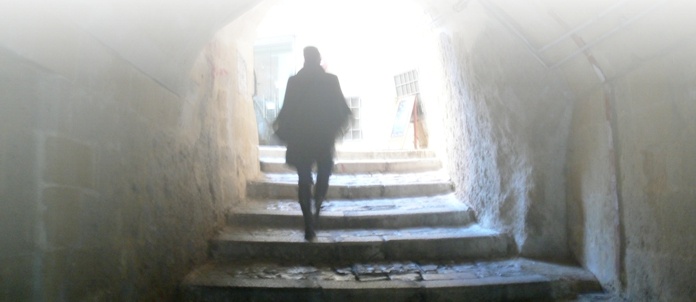
The spiritual journey is a transformational process that takes us through seven stages of our spiritual development. The path we take is built into us, in our expanding minds, hearts, and energy system. It’s an integral aspect of our desire to be alive – to live fully and grow, to expand in fulfilling ways and make a positive difference in the world.
The spiritual journey reveals the fullness of our human potential.
Essentially, the spiritual journey takes us from fear, separation, and limitation to love, connectedness, and expansion. For life coaches, understanding these stages and developing the ability to help clients to move through them with ease has tremendous value. When you understand where the people you serve are on the journey, you can relate precisely to their needs and desires, which may be very different from yours.
Interest in the Spiritual Journey and Stages of Development
We’ve had a deep interest in the spiritual journey for more than three decades. Over time, we recognized seven stages of spiritual development we all pass through along the way. This map of the path to wholeness is the result of extensive research and understanding of the human energy system, along with a wide range of experience with ourselves, our clients, and students. The seven steps or stages roughly correspond to seven spiritual activations that transform our perspectives on who we are, why we are here, and what is possible.
As we evolve, our perspectives evolve, so we can think and process information about our reality more expansively and inclusively. We now understand the focus of these stages as a shift in our experience of reality we call the “Ultimate Paradigm Shift.”
The Nature of the Spiritual Journey
We begin the first two stages of the journey with our feet firmly planted on the physical plane, viewing ourselves primarily as limited physical beings. Our consciousness is ruled largely by fear, which makes us easy targets for being controlled by others. Many people in these early stages view themselves as victims of circumstances that are beyond their control.
As we evolve, our “world” expands, and we glimpse beyond the material world into the realms of the human soul. Fear recedes and love blooms.
Spiritually, each of us is challenged to open to the Infinite, along with more joy and aliveness.
The transformation, then, is a redefinition of ourselves from limited physical beings who are victims of external forces to magnificent spiritual beings who are creators of the lives we were born to live.
Holistic Life Coaching and the Spiritual Journey
Coaching clients to progress with greater ease on the spiritual journey is powerful. If you are a life coach, imagine the tremendous benefits you can offer to clients. When you understand precisely where clients are on the journey, you can pinpoint the challenges and opportunities that are inevitably playing out in their daily lives. This helps them to progress more quickly and receive exponentially better results.
Knowledge of the seven stages of spiritual development and their impact on your life may be your most practical tool on the spiritual path. Once you understand the sequence, you can track your development step-by-step and bring deeper meaning to the events of your life, along with those you serve. You can also avoid the pitfalls that prevent people from evolving , and manifest the life you deeply desire.
The Seven Stages of Spiritual Development
As we evolve, our minds develop and our souls become more and more present in our lives. In the first two stages of spiritual development, people function largely on auto pilot, based on programming in the unconscious mind. This state is characterized by a lack of self-awareness , along with a high degree of fear and a narrow range of thinking. The result is a tendency to follow the crowd and play it safe.
An Overview of the Seven Stages
1. Recognition: From a place of lack of self awareness, something wakes up and we recognize that we have some choices. We are going with the crowd, but we are starting to awaken. The mind is becoming more active and new possibilities are emerging.
2. Breaking Loose (Renunciation): Now we recognize the opportunity to free ourselves from the herd and jump over the fence to freedom. This takes courage. We have to sacrifice the perceived safety of the crowd to open to more individual opportunities. As we prepare to take charge, fear starts to lose its hold.
3. Claiming Our Power: This is where it starts to get interesting. Now we get our first taste of freedom as we claim our right to live the lives we were born to live. The mind is expanding further now as we explore new possibilities. At this point, we enjoy the benefits of independence. Free from the herd, people often do uncharacteristically different things at this stage. They may start to dress differently, travel, change jobs, develop new interests, and change behaviors.
4. Embracing Our Greatness: Exploring freedom leads to a deeper exploration of who we are. This is when people begin to experience soul searching and recognition that the truth lies within, in the power of our hearts and souls . It’s the time when we bridge the gap between the restrictions of the physical plane and expansiveness of the spiritual plane. We are preparing to make the ultimate paradigm shift into a new way of being in the world, but don’t know where we are going.
5. Expressing Our Uniqueness (Sovereignty): As we embrace ourselves as spiritual beings, we rise a new level now, onto the spiritual plane. Now we are guided by the truth in our hearts. This stimulates a desire to express our deeper purpose and share our greatness with the world.
6. Integrating Our Roles as Creators: Our integration of this creative reality includes mastering our thinking and ways of being on the spiritual plane. Becoming more aware of the big picture now, we recognize how our actions can have a positive impact on larger numbers of people.
Love blossoms and fear recedes with the recognition that everyone has infinite possibilities and the supply of the good we seek knows no limit.
7. Transcendence: Now we complete the process of becoming fully functional as creators of the lives we were born to live. We are highly aware now that we create from the inside out with our minds and our hearts. We know how manifestation works and how our thoughts and feelings are responsible for the results we are getting in our lives. We are learning to live in harmony with the laws of the universe and reaping the rewards of our efforts on the journey.
More Notes on the Stages of our Spiritual Development
The first two stages of our spiritual development (Recognition and Breaking Loose) could be viewed as preliminary. Our personal transformation really begins when we free of the hold of the herd with the completion of the second activation. At this stage, we recognize the need to think for ourselves and release the grips of those who seek to control our lives. Having the courage to free ourselves from these ties provides us with the momentum we need to make the ultimate paradigm shift. Then we can move forward and become creators of the lives we were born to live.
Awakenings Institute’s unique Holistic Coaching and Healing Certification Program includes in-depth teaching of the stages of development. To learn more about how you can participate, CLICK HERE .
More articles that relate to the spiritual journey and stages of spiritual development:
Seven Essential Tools for Personal and Spiritual Transformation
The Ultimate Paradigm Shift
Life Coaching Home
Life Coaching Blog
gettingthru.org Home
What is Awakenings Institute?
This site has been created and maintained by Awakenings Institute and Holistic Communications.
Copyright 2024 by phillip mountrose and jane mountrose, terms of use, privacy policy.
- Published on June 16, 2023
- June 16, 2023
5 Steps to Launch Your Spiritual Journey, According to Mindvalley Experts

Jump to section

In a world that’s constantly changing, life can often feel overwhelming and purposeless. You may find yourself questioning your place in the grand scheme of things or yearning for a deeper connection with the world around you.
But what if the answers you seek lie within you, waiting to be discovered on a transformative spiritual journey?
As the name suggests, it’s a voyage into the deepest corners of your being. And it’s not just about seeking divine connection but also about fostering holistic personal growth.
Every spiritual journey is an invitation to find purpose in the chaos, peace in the tumult, and wisdom in the ordinary. It’s a journey home—a return to the essence of who you truly are.
What Is a Spiritual Journey?
At its heart, a spiritual journey is like an intimate expedition—a personal adventure where you dive deep into understanding and connecting with your inner self. And the ultimate goal? To achieve a profound sense of your spiritual essence.
This kind of exploration often paves the way for a closer bond with a higher power, the universe, your higher self , or whatever embodies the ultimate truth in your belief system.
With that in mind, the meaning of “spiritual journey” is unique for everyone. It’s typically drawn from their personal ideas, experiences, and desires.
For example, here’s how some renowned Mindvalley experts view a spiritual journey:
- Neale Donald Walsch , the author of the renowned Conversations With God series and trainer of Mindvalley’s Awaken the Species Quest, sees spiritualism as a heart-to-heart conversation. It’s a private chat between you and your divine essence.
- Ken Wilber , a philosopher and trainer of Mindvalley’s The Integral Theory Quest, describes it as like a metamorphosis. It guides you through various stages of consciousness until you achieve a harmonious blend of all of life’s aspects.
- Mahatria Ra , a spiritual leader and trainer of Mindvalley’s A Journey to Infinitheism Quest, believes it to be a pursuit of boundless spiritual and material abundance.
Your spiritual journey can morph into different shapes, from a quest for self-discovery or a search for life’s meaning to a pursuit of spiritual enlightenment or even a path to healing. In fact, a Pew Research Center study tells us that 49% of American adults say they’ve had a religious or mystical experience—that is, defining moments in their spiritual journey.
No matter its form, the spiritual journey offers a transformative pathway to understanding your true nature and purpose in this vast universe. It brings you face-to-face with your deepest fears and highest hopes.
What Happens On a Spiritual Journey?
Your spiritual journey unfolds in unique, often unexpected ways.
Initially, it could start with a surge of self-awareness, illuminating the parts of you previously hidden in the shadows. Or you could start noticing signs from the Universe . And as a result, you may begin to understand your feelings, thoughts, and behaviors more deeply, making sense of how they influence your relationships and experiences.
To illustrate, let’s consider the spiritual journey examples of notable figures like Mahatma Gandhi or Mother Teresa. Their journeys started with an internal quest—a longing for truth and service—and gradually radiated outward, impacting millions.
In the same vein, your spiritual journey may ignite a spark within you that eventually lights up the world around you.
Once you understand what’s going on, the purpose of all of it, the divine process, you take part in it in a brand new way… You see every golden moment of now as an opportunity to recreate yourself anew in the next grandest version of the greatest vision you ever held about who you are. — Neale Donald Walsch, trainer of Mindvalley’s Awaken the Species Quest
Research indicates that spiritual experiences are not uncommon, either. Specifically, a study published in the Journal for Scientific Study of Religion found that nearly half of the participants reported having a spiritual experience, such as a sense of deep interconnectedness or unity with the universe.
In essence, embarking on a spiritual journey is like turning the pages of a book—your own personal story—that’s been waiting to be read. You learn, you grow, and you transform.
The Different Stages of Your Spiritual Journey
Taking a close look at the spiritual journey, you might find it’s a bit like solving a maze. It becomes less daunting if it’s broken down into clear stages.
These stages of spiritual development —awakening, exploration, and enlightenment—are steps on your path that each offer unique experiences and insights.
Actually, moving through these levels is what we call the process of growing up, because that’s what humans do. Virtually from the moment of conception, human beings grow, develop, and evolve. — Ken Wilber, trainer of Mindvalley’s The Integral Life Quest
Now let’s take a closer look at the breakdown:
- Awakening. This is the initial stage where you might feel a sudden jolt, a stirring in your soul that nudges you to start asking life’s big questions. It’s akin to Neo in The Matrix realizing there’s a reality beyond his daily existence.
- Exploration. As the name suggests, this stage is all about venturing into the unknown territories of your inner self. It’s like Alice tumbling down the rabbit hole, full of curiosity and bewilderment. Here, you explore spirituality —the different practices, philosophies, and teachings—and find one that resonates most with your spirit.
- Enlightenment. The final stage is about reaching a state of profound understanding and acceptance. Picture it like “Avatar Aang mastering all the elements”—you feel deeply connected to everything around you. But remember, reaching this stage doesn’t mean it’s the end, but rather a continuous process of growth and learning.
“ There are no small changes in life ,” says Mahatria in his Mindvalley Quest. “ Every small change, in the long run, is a monumental transformation .”
And seeing these spiritual journey stages laid out can give you a roadmap for your own transformative adventure. It helps you see where you’re going and reminds you to enjoy it, not just rush to the end.
After all, as they say, the journey matters more than the destination.

How to Start Your Spiritual Journey
Let’s face it, the spiritual journey for beginners can be exciting but also a little overwhelming. It can even be that way for those who’ve walked the path before.
Where do you start? Which path do you take? And how do you navigate this uncharted terrain?
No matter where you are spiritually, this may just be the compass you need. It’ll help equip you with practical, actionable steps to embark on this epic quest.
Here’s a simple guide on how to start your spiritual journey:
1. Set your intentions
Like preparing for a marathon, the first step is to establish your goals. This means identifying what you hope to achieve or discover.
Are you seeking to understand spirituality versus religion ? Are you looking for inner peace, a deeper understanding of your life purpose, or perhaps a closer connection with a higher power? Maybe you’re looking for answers to life’s big questions or seeking to develop qualities like compassion, wisdom, or patience.
By determining your intentions, you create a baseline for your progress. And as you navigate your spiritual journey, you can reflect on these intentions, reminding yourself of why you started and what you’re striving for.
Insights from Mahatria Ra: “ Everything in life need not be done for an ultimate reward. Sometimes getting your life right itself is a reward in itself. But even if you want motivation for this, let me tell you this: The greatest setback in life is to fall in your own eyes, and the greatest pride in life is to grow in your own eyes .”
2. Start meditating
Think of meditation as your guiding compass, steering you through the labyrinth of your inner world. It’s a practice that facilitates quiet introspection, self-discovery, and a deeper connection with your inner self.
Starting a meditation practice can seem like a lot, especially if you’ve never done it before. But understand that it’s not about achieving a state of perfect tranquility; it’s about observing your thoughts and feelings without judgment.
You can begin with just a few minutes each day, creating a quiet space for yourself where you can focus on your breath or a simple mantra.
And as you grow more comfortable, you might want to extend the duration of your practice or explore different meditation techniques, like mindfulness, transcendental, or loving-kindness meditation.
Insights from Mahatria Ra: “ Experience this engulfing peace for some more time, and come out only when you feel like coming out. You plus your faith are such a miraculous combination. May this journey lead you higher, deeper, and beyond .”
3. Read and learn
Consider books about spirituality and personal growth as your survival manuals on this spiritual expedition. From ancient scriptures to contemporary bestsellers, these resources are packed with valuable insights, thought-provoking exercises, and practical advice that can illuminate your path.
Many Mindvalley trainers have written personal development books that delve into such spirituality. Here are a few you could look into:
- Conversations With God by Neale Donald Walsch
- A Brief History of Everything by Ken Wilber
- Most and More by Mahatria Ra
- The Buddha and the Badass by Vishen Lakhiani
- Inner Engineering: A Yogi’s Guide to Joy by Sadhguru
Keep in mind, it’s not about gathering heaps of information but finding the wisdom that truly speaks to your journey. So take moments to ponder these ideas, see how they fit with your experiences, and notice their influence on your perspective.
Engaging in this kind of intentional learning can make the difference between merely reading about spirituality and truly living it.
Insights from Ken Wilber: “ Consciousness is a spectrum, a rainbow of many different colored bands and different approaches to consciousness. And the therapy and self-improvement approaches, in general, had each focused on one of these bands, and if we wanted to understand consciousness itself, our own reality—understand that fully—then we needed to include all of those approaches, all of those paradigms .”
4. Find a mentor
Just as Frodo Baggins in The Lord of the Rings had Gandalf provide invaluable counsel and support, a mentor can serve a similar role in your spiritual quest. Research also shows that those with mentors experience higher levels of personal growth, self-efficacy, and satisfaction than those without.
And your “Gandalf” could be anyone—a spiritual teacher, a trusted friend, or even a family member—who has a profound understanding of the spiritual terrain.
They’ve journeyed through the ups and downs, faced challenges, and emerged enlightened. Their wisdom, therefore, can be a beacon for you, illuminating your path and making the journey feel less overwhelming.
Insights from Neale Donald Walsch: “ The purpose of relationships is not to have another who might complete you, but to have another with whom you might share your completeness .”
5. Maintain a spiritual diary
This diary is more than a mere journal—it’s a tangible reflection of your inner explorations, and it plays a vital role in your spiritual progression.
As you jot down your experiences, thoughts, and feelings, you’re essentially laying down a trail of breadcrumbs. These can serve as important markers, helping you track how far you’ve come and illuminating patterns you might not have otherwise noticed.
Writing regularly can foster mindfulness and enhance self-awareness, acting as a mirror for your thoughts and emotions. It can also help you articulate and solidify your understandings, offering a safe space to question, contemplate, and celebrate your spiritual journey.
Finally, this spiritual diary can act as a tool for reflection, allowing you to revisit and contemplate past entries, recognize your growth, and draw inspiration for the future.
Insights from Mahatria Ra: “ The simple steps of loving yourself, celebrating yourself, cherishing your uniqueness, looking forward to the future, and believing the future is going to be infinitely greater than your entire past .”
Unfold the Universe Within
A spiritual journey is a deeply personal odyssey into one’s inner self—a quest for understanding, connection, and a profound realization of one’s spiritual essence. Its importance cannot be overstated; after all, it fosters personal growth and transformation as well as builds bridges of empathy and compassion that connect us all.
Now that you’ve uncovered the what, why, and how of a spiritual journey, the real adventure begins—your adventure. And on this voyage, Mindvalley can be your trusted companion, your Samwise to your Frodo.
Here, you don’t just learn; you learn from the best—the likes of Neale Donald Walsch , Ken Wilber , and Mahatria Ra . They’ve traversed their own spiritual journeys and are now here to guide you on yours.
Why not get a taste of this transformative experience? Sign up for a free Mindvalley account and get access to the initial lessons of their quests.
Remember, the beauty of a spiritual journey isn’t just about the destination. It’s also about every single step you take toward it.
It’s like Mahatria says, “ Every small change held long enough creates humongous possibilities in you. ” And this small change on this adventure brings you one step closer to your true, magnificent self.
Welcome in.
Try Mindvalley for free

Unlock Your Free Mindvalley Access Today
Begin your path to greatness with free quest lessons, guided meditations, special community events, and more Get started
Tatiana Azman
Ken Wilber is an internationally recognized philosopher, the creator of Integral Theory, and the trainer of Mindvalley’s The Integral Life Quest .
Often referred to as “the Einstein of consciousness studies,” his work focuses on organizing humanity’s expanding knowledge to enhance and deepen its impact.
Ken’s theories have led to comparisons with intellectual giants like William James and Freud. This has earned him accolades from former President Bill Clinton as “ one of the most brilliant minds I’ve ever met .”
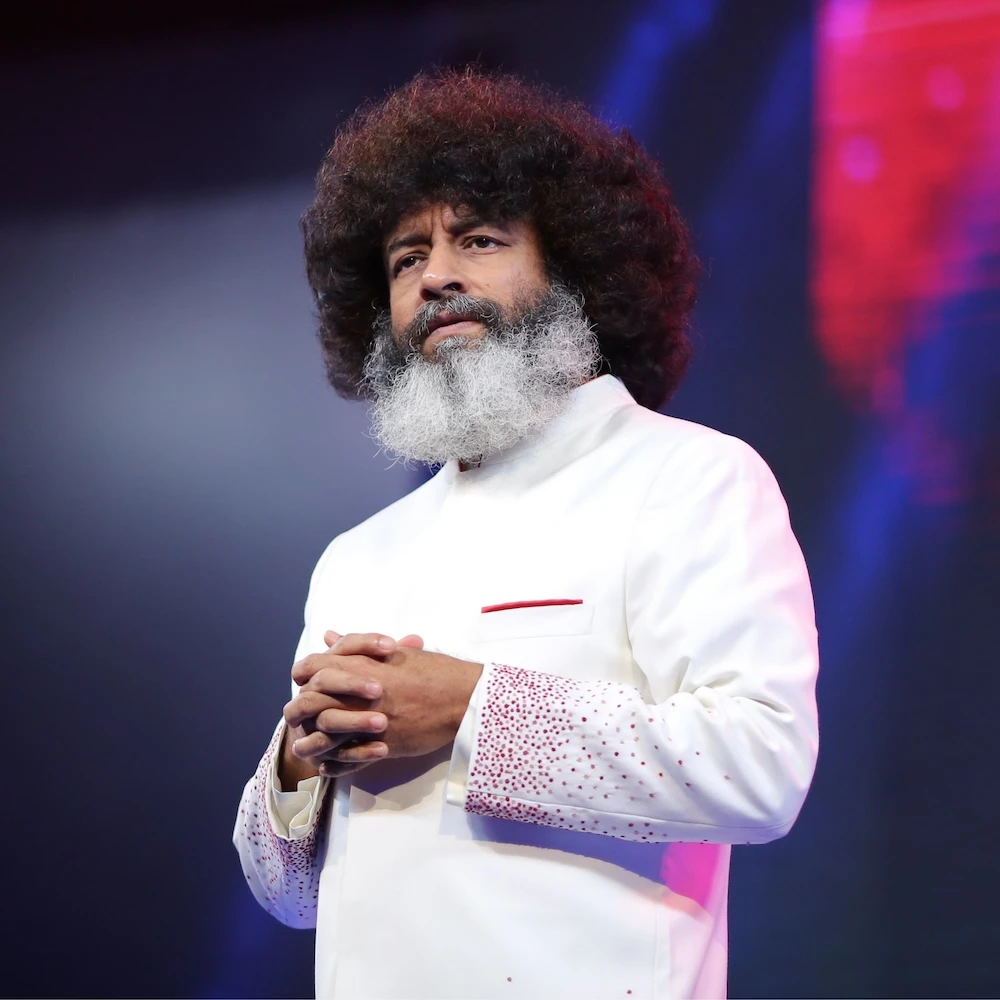
Mahatria is a spiritual teacher, best-selling author, and global speaker renowned for his unique approach to spirituality and self-mastery.
He has the ability to simplify complex spiritual concepts into practical steps—something he teaches in his A Journey to Infinitheism Quest on Mindvalley.
His philosophy, Infinitheism, merges over 25 years of spiritual study with Western science and Eastern wisdom. Its aim is to guide people of all backgrounds to enhance their lives and achieve their full potential.
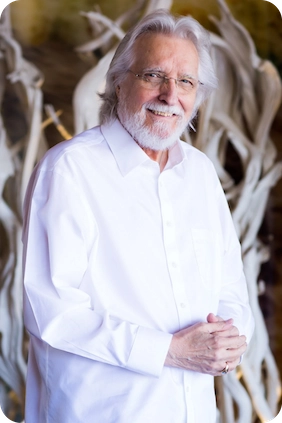
Neale Donald Walsch is best known for his Conversations with God series. They have been translated into 37 languages, a testament to how deeply they have influenced millions worldwide.
Nearly two decades after what was thought to be the final book, Neale experienced another unexpected conversation with God. This resulted in Awaken the Species , a revelation intended to guide humanity’s next evolutionary step.
He continues to inspire and provoke significant life changes in his Awaken the Species Quest on Mindvalley, encouraging people to explore deeper spiritual connections and understandings.
How we reviewed this article
Does mentoring matter a multidisciplinary meta-analysis comparing mentored and non-mentored individuals, 2017 study on spiritual development, the construction and preliminary validation of a measure of reported mystical experience, 1975, mystical experiences prc 2009 study, you might also like.

Get Started
- Try Mindvalley for Free
- Free Masterclasses
- Coaching Certifications
- Vishen Lakhiani
- The Mindvalley Show
- Partnerships
- In English 🇺🇸
- En Español 🇪🇸
- Editorial Standards
- © 2024 Mindvalley, Inc.
- English (EN)
Fact-Checking: Our Process
Mindvalley is committed to providing reliable and trustworthy content.
We rely heavily on evidence-based sources, including peer-reviewed studies and insights from recognized experts in various personal growth fields. Our goal is to keep the information we share both current and factual.
The Mindvalley fact-checking guidelines are based on:
- Content Foundation: Our articles build upon Mindvalley’s quest content, which are meticulously crafted and vetted by industry experts to ensure foundational credibility and reliability.
- Research and Sources: Our team delves into credible research, ensuring every piece is grounded in facts and evidence, offering a holistic view on personal growth topics.
- Continuous Updates: In the dynamic landscape of personal development, we are committed to keeping our content fresh. We often revisit and update our resources to stay abreast of the latest developments.
- External Contributions: We welcome insights from external contributors who share our passion for personal transformation and consciousness elevation.
- Product Recommendations and Affiliations: Recommendations come after thoughtful consideration and alignment with Mindvalley’s ethos, grounded in ethical choices.
To learn more about our dedication to reliable reporting, you can read our detailed editorial standards .
How To Embark On A Spiritual Journey & Discover Yourself
A guide to spiritual journeys: What it is, and 8 tips on how you can embark on your own.

Read more posts by this author.
If you've been going through a rough patch in your life, or if you've been feeling purposeless and aimless, then it might be time to take a step back and change things up. You may even want to consider connecting with your spiritual side – by going on a spiritual journey.

Photo by Aarón Blanco Tejedor on Unsplash
But don't be mistaken; a spiritual journey does not need to be related to religion (although some may find religion. As a matter of fact, a spiritual journey is about looking past the physical world and gaining a deeper insight into yourself and your life.
Everyone has a different purpose behind their spiritual journey, but the ultimate goal is to become at peace with yourself and the world; to let go of the past and look into the future. It will also help you become at peace with yourself and with the challenges you face in your life.
So, if you're interested in embarking on your spiritual journey for a happier life, consider following these 7 tips.
7 Tips For Starting Your Spiritual Journey
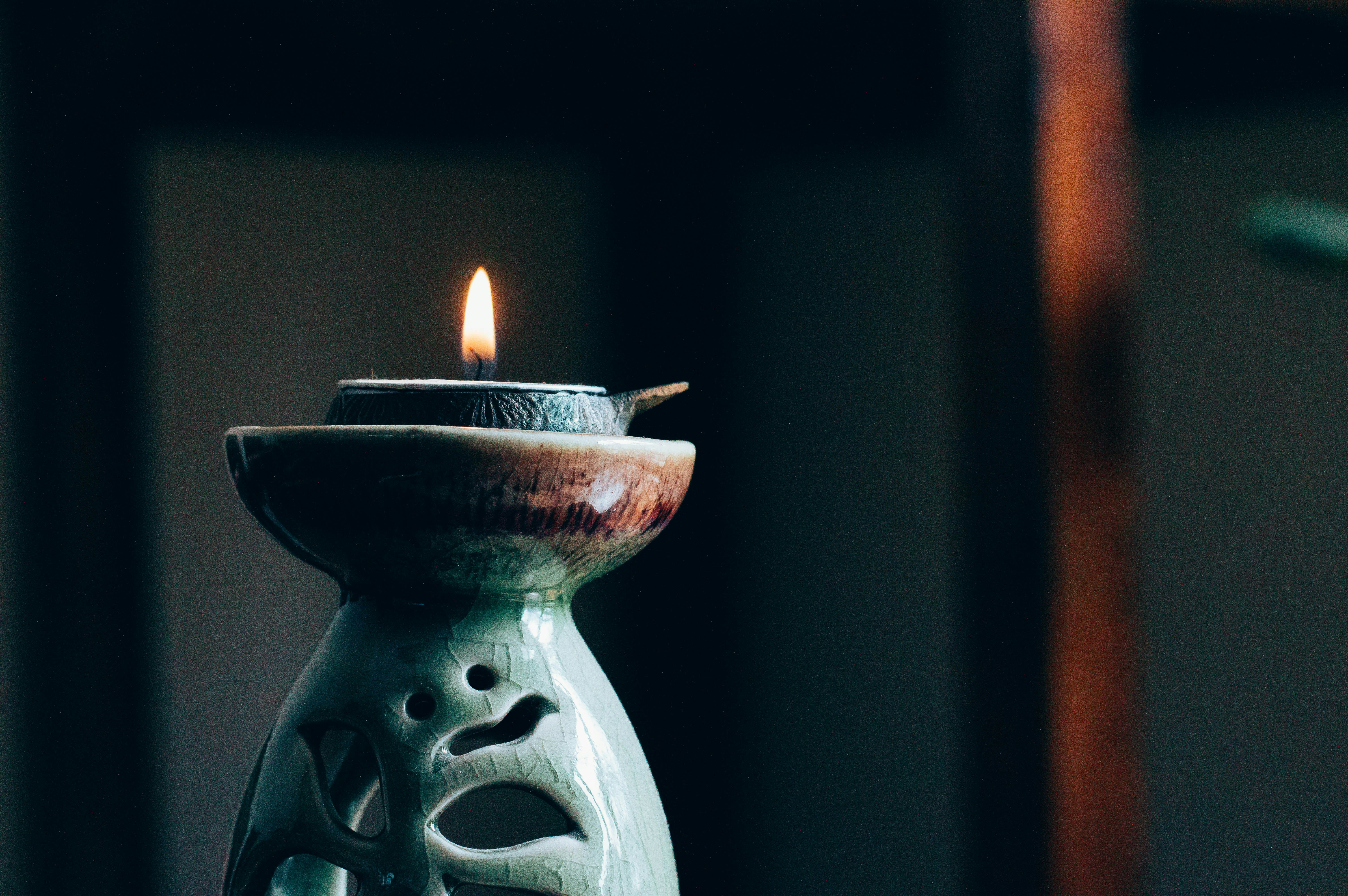
Photo by Hans Vivek on Unsplash
Remember, everyone undertakes their own unique spiritual journey, and therefore there are no hard and fast rules as to how your spiritual journey should look like. However, if you're feeling overwhelmed and unsure about where to start, we have some guiding tips that will make the process easier.
1. Identify a purpose
As mentioned earlier, everyone embarks on a spiritual journey for different reasons. So, before you begin, you have to establish why you've decided to embark on this journey, and what you want to get out of it.
Here are some examples that you can take inspiration from:
- You want to find more ways to improve yourself
- You want to find some answers to life and its happenings
- You've been through a difficult time, and now you want to have a thorough reset
- You want to get to know yourself and your goals better
When you know what you're working towards, it'll much easier for you to plan out your spiritual journey map and stick to your goals.
2. Make a spiritual roadmap
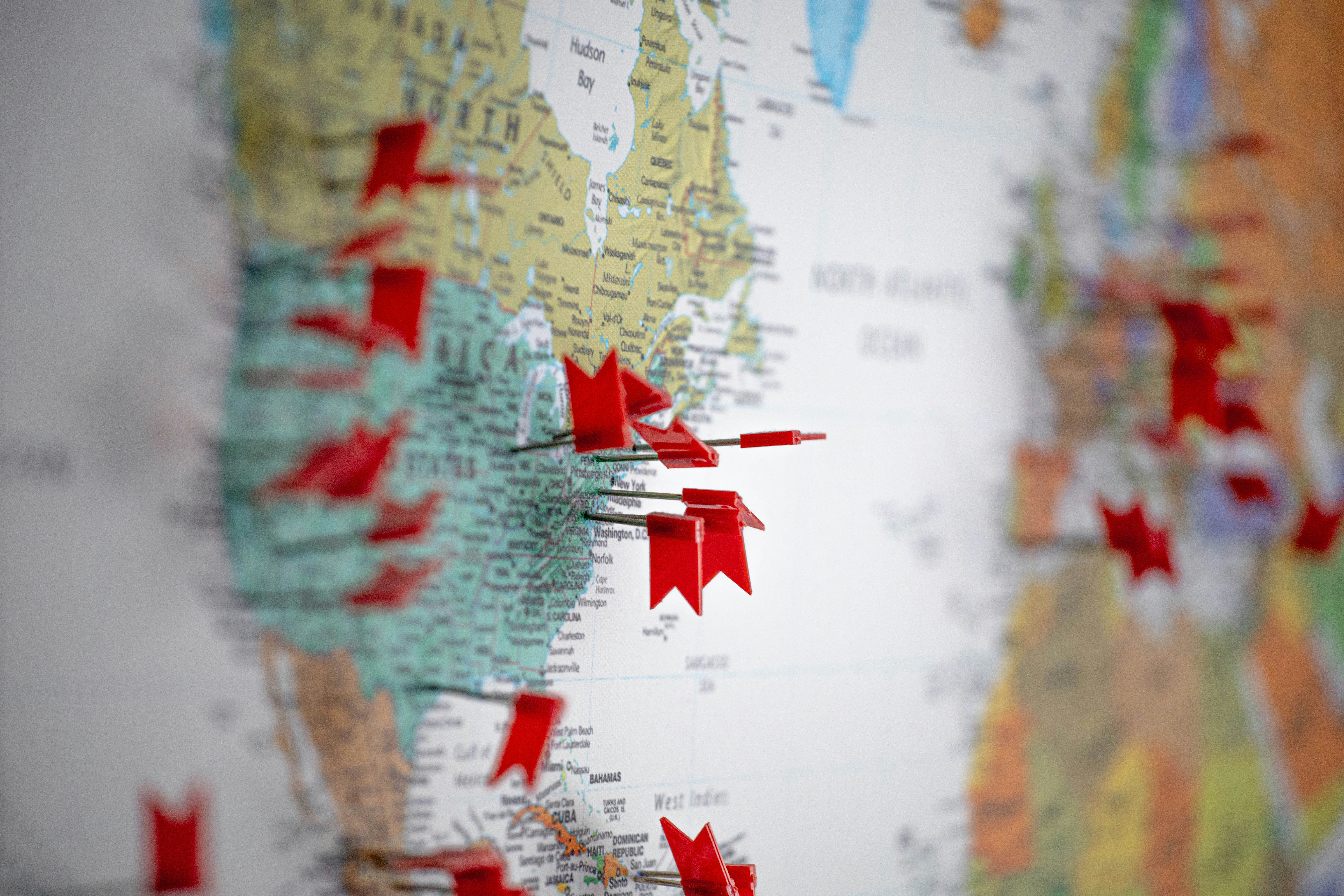
Photo by Timo Wielink on Unsplash
When you go on a road trip or a hike, you need to plan out your destinations and your schedule. The same goes for your spiritual journey! Once you've figured out the purpose behind your spiritual journey, you'll need to think about how you'll reach your goal.
For example, do you intend to join a yoga class? Or take a vacation from work and travel? Or maybe you're planning to spend more time in nature and pick up gardening. Whatever it is, it's important to make some general plans on what you would like to do or focus on.
3. Start small
Starting a spiritual journey can be a new and overwhelming process for many of us, which is why it's important to start small. If you start out with vague and ambitious goals like "start a garden" or "do yoga everyday after work", it can be difficult to stick to your plans and you may end up giving up.
Instead, take things small and slow. Give yourself small and realistic goals to begin with. Instead of starting with "start a garden", you could say, "start with a succulent". Instead of "do yoga everyday after work", say "do yoga thrice a week for 10 mins before bed".
Remember, this is your journey and yours only. There's no need to rush yourself and give yourself a deadline. Go with the flow!
4. Find or create a safe space for reflection

Photo by Stephanie Renee Cluff on Unsplash
Being able to find a quiet place to relax your body, mind and soul and reflect on the day is a key part of every spiritual journey. This should be, mostly importantly, a place that you feel the most safe in. You might even want to create a place of your own — making a blanket fort in your room, or finding a private spot on the nearby beach, for example.
No matter where it is, this should be a sacred and private place where you can safely and comfortably meditate and reflect. You may even want to consider adding essential oils, scented candles, blankets and pillows to make the place as comfy as possible.
5. Meditate
Now that you've found your sacred reflective space, it's time to pick up meditation. It's not an easy skill to pick up, but it's extremely beneficial for both your mental wellbeing and your spirituality! Meditation allows you to get in touch with your inner self and your emotions. That is why meditation is almost always a key part of spiritual journeys, regardless of the goal.
If you're new to meditation, there are tons of resources available on the Internet for your choosing. There are numerous YouTube videos and meditation apps like Calm or Headspace that can guide beginners through meditation.
6. Be open to new experiences
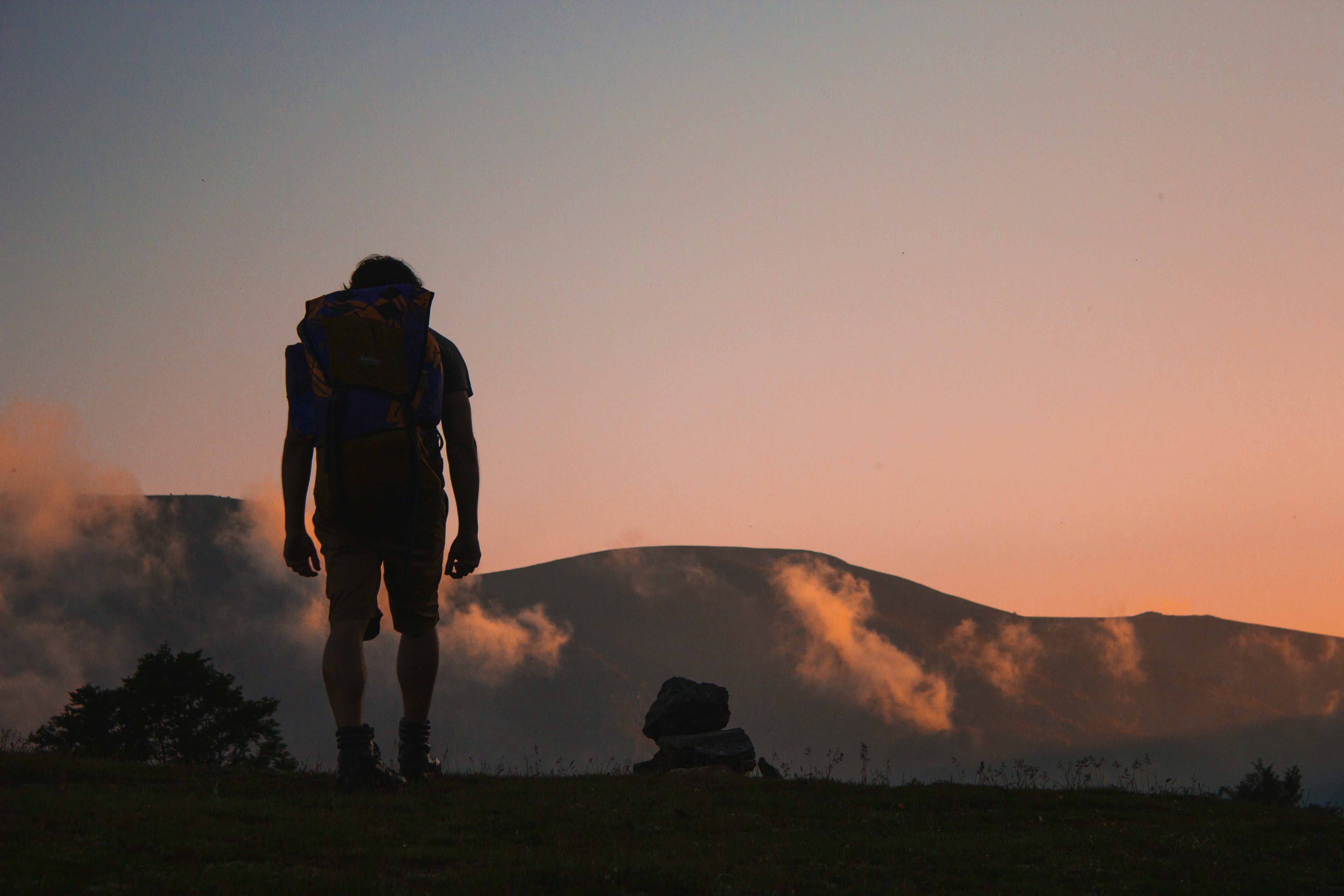
Photo by Mukuko Studio on Unsplash
And perhaps the most important tip of all is to keep an open mind! As you embark upon your spiritual journey, you may encounter activities that you've never tried before. It's important to be willing to step out of your comfort zone and try new things.
For example, if you've been skeptical about meditation and yoga, there's no better time to shelve those judgments away and just give it a shot. Or, if you've always been a homebody, it's time to shake the dust off those walking shoes and step out for a walk in the nearby park.
It's time to suspend your disbelief and approach everything new with childlike wonder and openness.
7. Pick up journaling
If you aren't already in the habit of journaling, you should consider picking up journaling throughout your spiritual journey.
Journaling is a great way to reflect on your life experiences and rediscover yourself. There are many deep prompts and questions online that you can answer in your journal, and you'll be surprised at how insightful your answers can be! Journaling can play a huge part in your spiritual journey and in learning more about yourself.
Plus, it's easy to pick up. All you have to do is download a digital journaling app like Journey and get started! On Journey, creating and writing journal entries is as easy as pie, and you can even upload pictures, videos and audio to supplement your writing.

Journey also comes with Journey Coach , where you'll have access to numerous Coach programs of various topics, from practicing gratitude to self-discovery, and even relationships! When you enroll for a program, you will be sent daily prompts to your Journey timeline under the Stories feature, where you can input your answers to these prompts. These programs and prompts can also help you on your spiritual journey!

Furthermore, journaling is also a great way to track the progress you've made in your spiritual journey. All you have to do is journal every day — preferably at night — and reflect on the day that has passed.
This way, you can always look back on these entries and take a look at how far you've come. Journey has a Throwback feature, which allows you to look back on your past entries and look at the course of your spiritual journey.

We hope that this article has been able to give you a better idea of what a spiritual journey is, and how you can embark on your own. We wish you the very best on your spiritual journey!

How to Start a Spiritual Journey: Simple Guide for Beginners
August 31, 2024
Lauren Williams

Ever wondered how to start a spiritual journey?
It’s a question many ask, but few know where to begin.
Starting a spiritual journey is like setting out on an adventure within yourself.
It’s not about following someone else’s path, but discovering your own.
Why start a spiritual journey now?
What’s pushing you to explore?
The reasons are as varied as people themselves, but they all point to one truth: looking inward is one of the most important things we can do.
Are you ready to take your first step on this personal quest?
This guide will help you begin your spiritual journey, offering practical tips and insights for newcomers. We’ll explore:
- What a spiritual journey really means
- Why people choose to start spiritual journeys
- Simple steps to begin your own spiritual path
- Examples of spiritual journeys to inspire you
Are you ready to discover more about yourself and the world around you?
What is a Spiritual Journey?

Before you learn how to start a spiritual journey, it’s important to understand what you’re getting into.
So what exactly is a spiritual journey?
A spiritual journey is deeply personal and can be a transformative experience.
It’s an individual’s quest for meaning, understanding, and connection.
This journey can stem from various motivations, such as seeking life’s purpose, inner peace , or a deeper connection to something greater than oneself .
It’s not confined to any specific religion or belief system.
The journey often starts with a moment of recognition, where one feels a need for deeper understanding.
This could arise from a personal crisis, introspection, or curiosity about life’s mysteries.
It could involve self-discovery and growth, utilizing tools like meditation, and mindfulness, or learning from spiritual texts.
Each journey is unique, shaped by individual experiences and beliefs.
One can learn to listen to their inner voice, challenging preconceptions, and being open to new perspectives.
It is an ongoing process of personal evolution, and not about reaching an end destination.
Why Start a Spiritual Journey?

People start spiritual journeys for various deeply personal reasons.
A common motivator is the quest for deeper life meaning .
Individuals often seek to understand their existence beyond material or superficial aspects, leading them to explore spiritual realms for greater truths about their place in the universe.
Another reason is the pursuit of inner peace and emotional healing .
Life’s challenges, like personal losses or stress, drive many towards spirituality for solace and clarity.
This path often involves mindfulness and self-compassion practices, aiding in emotional well-being and resilience.
Personal growth and self-awareness are also key motivators.
This aspect of the spiritual journey focuses on overcoming limiting beliefs and negative patterns.
Individuals aim to develop qualities like compassion and patience, striving to become their best selves.
Finally, some seek a connection with a higher power or a deeper reality.
This varies from person to person – for some, it’s a divine entity, while for others, it’s an understanding of nature’s forces or the interconnectedness of life.
This connection provides guidance, support, and a sense of belonging.
12 Simple Steps to Start Your Spiritual Journey

1. Set Clear Intentions
Establishing clear intentions is the foundation of your spiritual journey.
Determine what you hope to achieve, whether it’s gaining a deeper understanding of yourself, finding inner peace, or exploring your connection with a higher power.
These intentions will act as guiding lights, keeping you focused and aligned with your spiritual goals.
2. Start Small
Begin with manageable and realistic goals.
Instead of overwhelming yourself with grand aspirations, start with simple, achievable steps.
This could involve daily practices like short meditation sessions, reading spiritual literature, or spending quiet time in nature.
Small steps ensure consistent progress without the risk of burnout or disillusionment.
3. Develop a Spiritual Roadmap
Like planning a physical trip, your spiritual journey needs a roadmap.
Decide on the practices and activities you want to incorporate.
This could include joining yoga or meditation classes, participating in spiritual workshops, or dedicating time to be in nature.
Your roadmap should reflect your personal intentions and interests, guiding your journey in a structured yet flexible manner.

4. Incorporate Meditation
Meditation is a cornerstone practice in many spiritual journeys.
Begin with brief sessions, focusing on your breath or a simple mantra.
As you become more comfortable, you can explore various meditation techniques like mindfulness, loving-kindness, or guided visualizations.
Regular meditation fosters deeper self-awareness and a stronger connection with your inner self .
5. Seek Knowledge
Immerse yourself in spiritual texts and teachings.
This could range from ancient scriptures to contemporary spiritual books. For those interested in exploring beyond Earth, here’s a list of 5 must-read books .
Find materials that resonate with you and provide insights pertinent to your journey.
These resources serve as tools for enlightenment, offering different perspectives and wisdom that can illuminate your path.
6. Find a Mentor or Guide
A mentor or guide can be invaluable on your spiritual journey.
This could be a spiritual teacher, a learned friend, or someone within your community who possesses deep spiritual insight.
Their experience and wisdom can offer guidance, support, and a different perspective, helping you navigate the complexities of your spiritual path.
7. Create a Reflective Space
Establish a dedicated space for reflection and meditation.
This could be a quiet corner in your home, a spot in your garden, or any place where you feel peaceful and undisturbed.
Personalize this space with items that promote tranquility, such as candles, cushions, or incense.
This sanctuary can become a vital retreat for introspection and spiritual exercises.
8. Embrace New Experiences
Be open to exploring new spiritual practices and traditions.
This might involve attending different types of spiritual retreats, workshops, or ceremonies.
Embracing new experiences can broaden your understanding and provide fresh perspectives, enriching your spiritual journey.
Remember, the path to spiritual growth often lies outside your comfort zone.
9. Maintain a Spiritual Journal
Keeping a spiritual journal is a powerful tool for self-reflection and tracking your journey’s progress.
Regularly write down your thoughts, experiences, and the emotions you encounter along your path.
This practice not only helps in processing and understanding these experiences but also in observing your growth over time.
A journal can serve as a personal repository of insights and realizations, aiding in deeper self-awareness.
10. Stay Open and Adaptive
As you evolve and learn, be willing to adapt your practices and beliefs.
Your journey is dynamic, and new understandings may lead you down unexpected paths.
Staying open to change ensures that your spiritual growth is not hindered by rigidity or narrow-mindedness.
Embrace the journey’s fluid nature, and allow yourself to be surprised by where it takes you.
11. Practice Gratitude and Mindfulness
Cultivate an attitude of gratitude and mindfulness in your daily life.
Practicing gratitude can shift your focus from what you lack to the abundance you possess, fostering a sense of contentment and peace.
Mindfulness keeps you rooted in the present moment, enhancing your awareness and appreciation of life’s experiences.
Together, these practices enrich your spiritual journey, grounding you in a positive and receptive state of mind.
12. Connect with Like-Minded Individuals
Joining a community of like-minded individuals can provide support, inspiration, and a sense of belonging on your spiritual journey.
Whether it’s a local meditation group, an online forum, or a spiritual study circle, connecting with others who share similar paths can offer encouragement and a platform for sharing experiences and insights.
These connections can also provide diverse perspectives, further enriching your spiritual
Different Ways to Begin Your Spiritual Journey

Starting on a spiritual journey can take many forms, each offering unique insights and experiences.
While the essence of these journeys is deeply personal and varied, they often share common themes of self-discovery, inner peace, and a deeper connection with the world around us.
Here are some examples of spiritual journeys that individuals might undertake:
- Meditative Retreats Meditative retreats provide an opportunity for deep introspection and tranquility. These retreats typically involve periods of silence, guided meditation sessions, and teachings on mindfulness and meditation techniques. Participants often seek to deepen their meditation practice, develop greater self-awareness, and find inner peace. Such retreats are beneficial for those looking to escape the hustle of daily life and delve into the depths of their mind and spirit.
- Pilgrimages to Sacred Sites Pilgrimages involve traveling to places deemed sacred or spiritually significant, like temples, holy mountains, or ancient ruins. These journeys are often undertaken with the intent of seeking spiritual enlightenment, performing religious rituals, or experiencing a profound connection with a divine entity. Pilgrims may seek healing, blessings, or a sense of unity with the cosmos, and these journeys can be transformative, offering a blend of cultural, historical, and spiritual enlightenment.
- Yoga and Wellness Retreats These retreats combine the physical practice of yoga with holistic wellness activities. Participants engage in various yoga styles, complemented by activities like nature walks, spa treatments, and health-focused nutrition. The goal is to achieve balance and harmony between body, mind, and spirit, often in serene and natural settings. These retreats cater to those looking for a rejuvenating experience that nurtures all aspects of their being.
- Spiritual Workshops and Conferences Attending workshops and conferences led by spiritual leaders or experts offers an opportunity for learning and community building. These events cover a wide range of topics, from specific religious teachings to broader spiritual practices. Attendees benefit from the knowledge shared, the experiences of fellow participants, and the sense of community that comes from meeting others on similar spiritual paths.
- Personal Spiritual Practices Engaging in daily personal spiritual practices is a more intimate journey. This can include activities like prayer, meditation, reading spiritual texts, or performing personal rituals. The focus here is on continuous personal growth, self-reflection, and cultivating a deeper connection with one’s spiritual beliefs. This path allows for a highly personalized approach, adaptable to the individual’s needs and lifestyle.
- Nature Immersion and Eco-Spirituality Spending time in nature to connect with the Earth and its ecosystems forms the core of this journey. It involves activities like hiking, camping, or participating in environmental conservation, aiming to foster a sense of unity with nature. This path is ideal for those seeking spiritual growth through an ecological lens, emphasizing the interconnectedness of all living beings.
- Volunteer Work and Humanitarian Missions Participating in volunteer work or humanitarian missions embodies the spirit of selfless service. This journey is marked by activities ranging from local community service to global humanitarian efforts. The focus is on developing empathy, compassion, and finding spiritual fulfillment through the act of helping others. This path appeals to those who find spiritual growth in the service of humanity and the betterment of the world.
Crafting Your Own Unique Spiritual Journey
Remember, learning how to start a spiritual journey is just the beginning.
As you move forward, you’ll be crafting your own unique spiritual journey, one that reflects your personal growth, insights, and experiences.
This journey isn’t always easy.
It takes courage to face yourself honestly.
But it’s also deeply rewarding.
Every choice you make, every moment of reflection, shapes your spiritual legacy.
These experiences stay with you, helping you grow.
So, why wait?
Your journey begins now, with your very next decision.
Are you ready to explore the depths of who you are and who you can become?

Lauren believes spirituality shouldn't be intimidating. She blends ancient practices with modern tools to help you unlock insight, improve your focus, and find deeper meaning within your everyday life.
Discover. Reflect. Grow. At Inner Growth Center, turn insight into meaningful change. Join our community and create a life with less stress and more joy. We are reader supported. As an Amazon Associate I earn from qualifying purchases. This does not impact our reviews and recommendations.
Privacy Policy
© 2024 Inner Growth Center. Empowering personal journeys, one story at a time.
How to Start Your Spiritual Journey: 7 Illuminating Steps
/
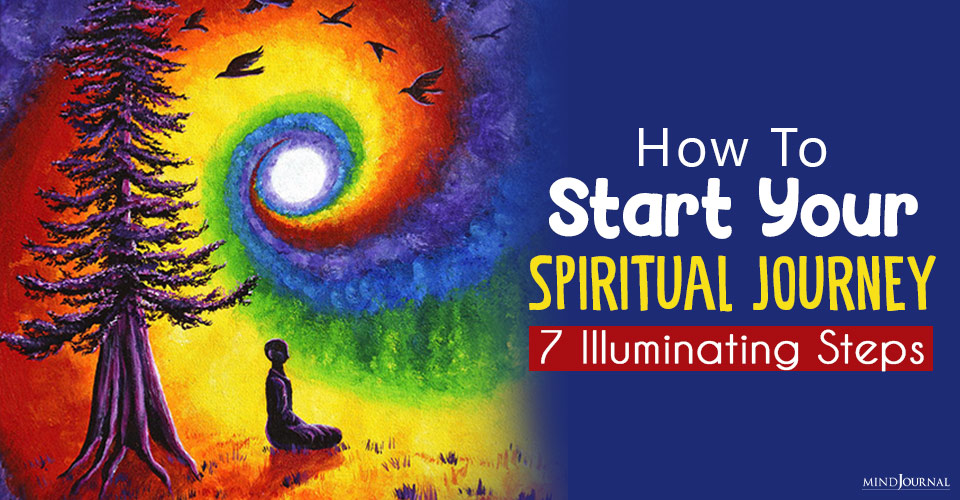
We all are aware of the fact that life is a journey, but do you know what is a spiritual journey? It’s the journey from one level of consciousness to another. Believe it or not, your spiritual journey has been started from the day you are born, you are just trying to hasten it. What we seek is within us, it always has been.
“There is a candle in your heart, ready to be kindled. There is a void in your soul, ready to be filled. You feel it, don’t you?” – Rumi
Welcome, dear wanderer.
You’ve come to this page seeking guidance, and that’s what I intend to give you wholeheartedly. If you’re short on time, scroll down to see the Table of Contents . Otherwise, I promise you that this article is worth reading from start to finish.
Let’s begin with the uncomfortable truth:
Most of us in the modern world have resigned ourselves to a cliched existence, indulging in endless distractions. We go through life with minimal or pseudo-faith, and avoid grasping the emptiness of our lives. We are endlessly haunted by the shallowness of our relationships, neurotic issues, and inescapable loneliness .
And yet there’s so much more to us as a species than what we really know.
You and I carry the most mysterious and magnificent qualities within us imaginable. Yet, we unknowingly guard and protect the greatest gift that is our Souls from the world.
It’s so easy for us to feel meaningless when we perceive ourselves as mere cogs in society’s machine. The truth is that we are much more than slaves of 9 to 5 jobs. We are capable of creating deeply meaningful, mystical, and fulfilling lives. We are capable of finding our true calling and personal destiny.
For centuries the indigenous people throughout the world have known that to fully explore the depths of the Soul we must go on a spiritual journey into the unknown lands within ourselves.
In many ancient cultures, they had Elders and Shamans to encourage and oversee these journeys toward a deeper spiritual existence. Sadly, these days in our own culture, we have lost such sacred rites and rituals. Instead, orthodox religion has replaced living spirituality with a theoretical god , dismissing, and outlawing personal experimentation and union with the Divine.
In this article, my aim is to help you start your spiritual journey.
What is A Spiritual Journey?
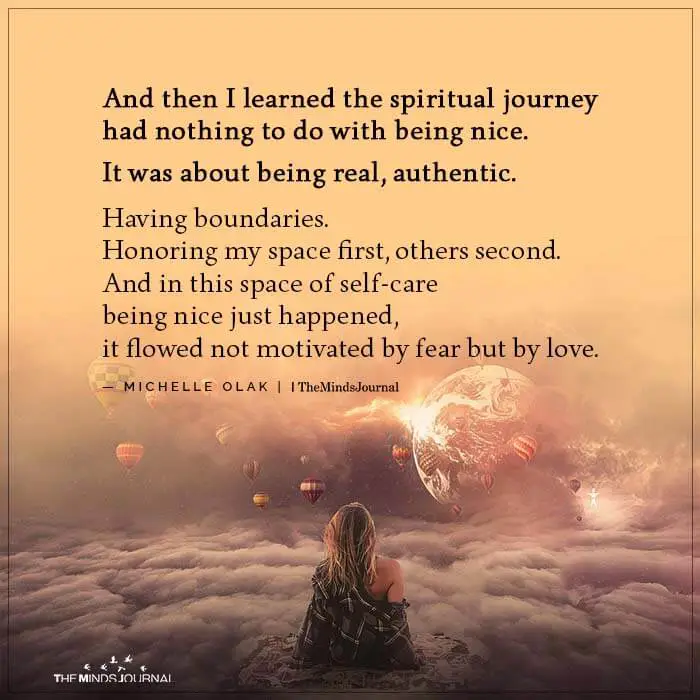
The spiritual journey is a personal quest we undertake to reconnect with our Souls, find our authentic life purpose, and embody our True Nature .
In a nutshell, the spiritual journey is about returning to the Centre of our being: it’s a path traditionally undertaken by mystics, shamans, and sages. But in this day and age where times have changed, and we’re suffering from collective soul loss , the spiritual journey is accessible to all people. Indeed, it’s our deepest longing and highest calling as a species.
Read: The 7 Levels of Spirituality – Where Are You?
12 Signs You’re Called to the Spiritual Journey (the Ancient Hero/ine’s Path)
People have felt a pull toward something greater than themselves since the beginning of time. Ancient cultures had many stories that served to illustrate the journey to fulfilling one’s destiny and experiencing Wholeness or Enlightenment. These journeys mythologist Joseph Campbell described as the “Calls to Adventure.”
A call to adventure is something we all experience at least once in life. When we embark on this adventure, we begin the process of gaining self-understanding and reclaiming our precious Soul gifts.
The archetype of the hero/heroine discovering their true spiritual nature goes back thousands of years. The Greek’s told the story of Orpheus who descended into the underworld to rescue his bride Eurydice from Hades.
The Nordic people had their hero-warrior Beowulf , and the Sumerians wrote of Inanna who battled her sister in the dark world. Throughout history, there have been so many stories of individuals who have struggled through hardship to find themselves. But of what importance are they to our path?
Essentially, these hero/ines symbolize our spiritual journeys : leaving everything familiar behind, entering the unknown, encountering numerous unconscious monsters, and finally returning back home with a sense of renewed fulfillment and wisdom.
Here are 12 signs you’re being called to walk the spiritual journey of awakening:
- You feel lost in life
- You long for a place that feels like your ‘true home’
- You keep wondering what your meaning or purpose is
- You feel like you have a big destiny to fulfill (which is yet to be revealed)
- You sense that there’s much more to life than meets the eye
- You’re experiencing strange synchronicities, signs, and omens
- You’re shedding your old self and are transforming, but you don’t know who you truly are yet
- There’s a sense of nostalgia and nagging longing for something you can’t pinpoint
- You experience bouts of melancholy, depression, and existential crisis
- You feel extra sensitive and fragile
- A lot of what you once valued seems meaningless and empty
- It feels like the rug has been pulled out from underneath you, and you’re falling
Can you relate to any of the above signs? If you can, you’re most certainly being called to embark on the spiritual journey.
The 3 Worlds of the Spiritual Journey (Which Are You Inhabiting?)
“ The breeze at dawn has secrets to tell you. Don’t go back to sleep. You must ask what you really want. Don’t go back to sleep. People are going back and forth across the doorsill where the two worlds touch. The door is round and open. Don’t go back to sleep” – Rumi
At some point in life, we all experience the “call to adventure.” Often our journeys start when we experience a sudden spiritual awakening or dark night of the soul . Often without wanting to, we are cast onto the path of Soul expansion.
Like you, I have wandered these paths and have at times wound up lost and confused. For this reason, I find it useful to map out the spiritual journey in a way that helps the human mind know where it is, and where it will go next.
My Andean ancestry speaks of three worlds that we can experience in life: the Upper World (Hanaq Pacha), the Middle World (Kay Pacha), and the Lower World (Ukhu Pacha). In many traditions and mythologies, these three worlds correspond to the different realms of the Self.
Read: Jim Carrey On Awakening: How He Began His Spiritual Journey
The Upper World is the home of Spirit, the Underworld the home of Souls, and the Middle World is the home of the physical body and human ego .
Different practices and techniques are used in each of the three realms to help us spiritually mature and rediscover joy, peace, and wholeness. Below I’ll explore each of these three realms with you:
1. Middle World
Purpose: Personality development
In our everyday lives, we function within the middle world. The middle world is responsible for our ego development, and yet many people on the spiritual path ignore this vital element of inner growth. Without developing a healthy personality, our spiritual growth reaches a dead end.
In life, we all begin within the middle world, or physical realm. As children and teenagers, we go through various years of personality change and growth. Finally, as adults, we all have developed unique personalities. Yet many of us fail to continue our self-development, getting lost in corporate jobs and the pursuit of money, status, and fame.
The goal of the middle-world path is to develop a healthy personality or ego. Tasks involved in this process include the exploration of core emotional wounds, self-love , and the cultivation of authenticity. A healthy adult ego will be able to love freely, be vulnerable, express creativity, and display empathy towards others.
We cannot develop a healthy personality by using techniques from the Upper or Under World such as meditation or shadow work. Instead, we must use techniques that pertain to ego development and healing such as assertiveness training, non-violent communication techniques, cognitive behavioral therapy, NLP, and other psychological avenues of self-development.
2. Under World
Purpose: Soul discovery
Our Soul is the vital, mysterious, and wild core of our individual selves. It is the unique essence within each of us that goes deeper than our personalities.
Think of your Soul as a stream that is connected to the ocean of Spirit. Our Souls contain our destiny, purpose, gifts, and the ultimate significance of our individual lives. To access these deep layers and qualities we must descend into the Under World of our unconscious minds.
Unfortunately, for thousands of years, our culture has “protected” us from the hardships and dangers of the descent into the Soul. This has been done through the establishment of comfortable, predictable, and clockwork lives that revolve around material pleasures and shallow values.
In fact, thanks to religious thought, the descent into our Under Worlds has been condemned as “evil” and wayward. Only Shamanic cultures and a few Western mystical schools like Hermeticism and Alchemy have dedicated themselves to exploring the Under World.
The descent into the Under World has been so feared and avoided because it is a perilous journey. There is a reason why Christianity referred to this place as “hell.” Within our, Under Worlds lie our repressed thoughts, feelings, desires, traumas, and denied gifts.
Often when we descend, or inscend, into ourselves, we come across many demons, ghastly creatures, and other parts of our Shadow Selves that we’ve been unconsciously hiding from.
Yet despite the fact that the Under World journey can be such a harrowing and haunting experience, it is ultimately a powerful odyssey. Only by descending into our personal Under Worlds can we truly embrace our true life calling, talents, gifts, and deepest values.
Under World, or soul work techniques, include practices that allow us to access altered states of consciousness . These may include crafts such as lucid dreaming , drumming, shadow work , shamanic trances, breathwork, vision quests, etc.
3. Upper World
Purpose: Uniting with Spirit
The Upper World journey, or that of the ascent, is what we often refer to as Self-Realization .
There comes a moment in our journey between the middle world and the underworld in which a fine balance is formed, allowing us to move up into the Upper World.
For example, it’s much harder to “ Spiritually Awaken ” to the Upper World when our unconscious minds are plagued with deep childhood traumas (that stem from the underworld), trust issues (underworld problem), and poor self-esteem (middle world problem).
We enter the path of ascent up into the Upper World when we learn to surrender our ego identification (known as ego death ) and Soul identification. Ultimately, we not only intellectually understand that everything is One, but we experience this truth at a core level. At this point, we are free from the illusion of having a separate self. This has also been commonly referred to as the state of complete self-realization or Enlightenment.
This permanent shift of consciousness is about merging with the Infinite, Divine, Eternal, and Absolute. Techniques used to taste this state of being are often found in the mystical schools of Zen, Kundalini , Taoism, Sufism, and disciplines such as meditation and yoga.
Note: Unfortunately many people in the spiritual community believe that spiritual ascension is all that is needed to experience peace and wholeness. As a result, the middle world and underworld paths have been cast aside as if they don’t matter.
However, only focusing on your “higher chakras,” cultivating positivity and Oneness with Spirit , creates lopsided individuals. When the darker and more down-to-earth elements of self-growth are ignored, the result is imbalanced and unhealthy individuals .
5 Phases of the Spiritual Journey
Roughly speaking, there are about five phases of the spiritual journey. I refer to these as ‘phases’ and not stages because the spiritual journey is not a linear process that has a start and end: it is cyclical. It’s like the moon. It’s a spiraling dance of energy that is ever-deepening and changing.
Here are the five phases. We’ve also linked to the various ‘parts of each phase that we’ve both uniquely discovered and defined after many years on the path:
Read: What Is Your Spiritual Gift? Find Out With This Quiz
1. Soul-searching
This phase is divided into the following two parts (which are also linked to in the menu of this website). Feel free to click on any for further guidance:
- The Spiritual Calling
- Resisting the Path
Summary: Phase one of the spiritual journey begins with a deep craving and longing for something more than mundane daily life. There may be a sense that life has become a dry, desolate, meaningless, and barren wasteland without some kind of spiritual dimension. This type of existential crisis can arise spontaneously, due to a traumatic situation, mental or physical health issues, or simply due to one’s sensitive temperament. The result is a search for meaning, purpose, and greater spiritual connection – or what is commonly known as soul searching .
2. Awakening & learning
- Finding Guidance
- Starting the Journey
Summary: Awakening and learning is the next phase of the spiritual journey. Once one has listened to the ‘call to adventure’ and has begun searching for answers, the sense of inner deadness and stagnation lifts. The veil is pulled from our eyes. We awaken to fresh possibilities, new horizons, and deep insights. There is renewed hope, ecstatic zest for life, joyful anticipation, and the passion to learn, explore, and grow. It’s as if the sun has finally emerged from its slumber and we’re bathed in the dawning light of spiritual awakening .
3. Death & demons
- Turning Inwards
- Facing the Darkness
Summary: As our spiritual journey matures, we eventually face a crossroads. To continue growing, we must enter through the gates of our personal Underworld and face our demons. We learn that the spiritual journey is beautiful, yes.
But it’s also demanding. If we’re sincere about authentic spiritual growth, we need to illuminate our inner darkness, explore our shadow selves, and heal our buried traumas. This death of the spiritual ‘high’ of the previous phase can lead to much fear and confusion. The result is often an experience of the Dark Night of the Soul where we step out of the ‘sunshine and rainbows’ world into the moonlit world of ghosts and ghouls.
Read: Shadow Work: How to Let Your Inner Demons Guide You
4. Rebirth & reward
- Illumination
- Traps & Pitfalls
Summary: Eventually, we emerge out of the other side of the Dark Night of the Soul. We have been to hell and back – we’ve had our hearts ripped open and minds excavated. But we arise victorious with Souls blazing bright and newfound inner strength. This rebirth and reward often result in newfound clarity, mystical experiences , moments of Satori (Enlightened awareness), and the development or rediscovery of various spiritual gifts. We go through a new level of awakening, this time at an energetic level via an experience known as the Kundalini awakening . However, this experience is not all love and light. There are many lurking shadows and spiritual traps to be wary of.
5. Illumination & sharing
- Integration
Summary: After the body, heart, and mind undergo this cleansing and purging journey, a deeper level of Illumination is experienced. We begin to integrate all the lessons we’ve learned and the gifts we’ve developed, bringing them into our daily lives. This is the moment where we truly start walking the talk. As such, there is a strong desire within us to share our personal ‘elixir’ and hard-earned wisdom with those who need support. We may adopt the role of teacher, guide, or mentor – or otherwise, embrace new ways of helping others. Perhaps the key defining quality of this phase is a strong connection to one’s True Nature .
There’s an intimate, inner knowing of the Divine as one’s true face, authentic essence , and ultimate home.
Again, the above five phases are by no means linear or static. They are cyclical and ever-deepening. This is the nature of life where we gradually discover that we are Life itself.
How to Start Your Spiritual Journey (7 Steps)
Everyone’s spiritual journey is unique, ever-changing, and ongoing.
There is no single point at which we stop this inner transformation. In fact, the whole mistaken idea of reaching a state of “perfection” really only equals death and stagnation. And what happens when things stop growing and flowing?
They become lethargic, break down, rot, and disintegrate. While the demands for constant growth and evolution may be difficult to handle at times, they are necessary for us to find our life purpose and fulfill our destiny on this planet.
If you wish to live a deep, meaningful, rich, rewarding, and loving life that is full of heart and Soul, beginning your spiritual journey is not only important but crucial.
Understandably, you might feel a bit intimidated and lost, not knowing where to start. As someone who has dedicated a large portion of their life to the spiritual journey, as well as guiding others through theirs, here are my tips:
1. Be gentle and go at your own pace
It’s normal to feel overwhelmed and a little inundated by the influx of information when first beginning your spiritual journey. My advice is to go slowly, be gentle, and go at your own pace. You don’t need to know every tiny detail of every field of wisdom ever created. (I know it’s tempting!)
Besides, everything that you’re learning about is already within you. Yes, you have all the answers you need at a Soul level because you are an expression of the Divine at your core. Everyone else is just a mirror of that.
So cut yourself some slack. The key is to go gently but deeply – that is how you will learn and grow the most.
2. Figure out the purpose/aim of your journey
Think carefully about why you want to begin walking the spiritual path. Do you have a specific goal, purpose, or intention in mind? Are you wanting to find something or avoid something? (Or perhaps both.) Perhaps you would like to achieve or experience something?
There are a myriad of reasons why people enter the spiritual journey. For example, some people want to experience enlightenment, connect with their spirit guides , develop their spiritual gifts , find their life’s purpose, taste truth/freedom, be free of an old trauma/addiction, and so on.
Keep in mind that your purpose/aim will likely shift and change as you progress through your spiritual path – this is completely normal. Your path and needs are unique to you, so embrace them.
Read: 4 Ways to Find The Purpose Of Your Life
3. Pay attention to philosophies, tools, or practices that intrigue you
Once you’ve figured out why you want to explore the spiritual path, simply pay attention. Notice what spiritual fields, ideas, philosophies, and practices pique your interest. The spiritual journey doesn’t have to be something dry, monotone, and repetitive (unless you want it to be). This is a quest that ideally involves play, joy, and passion.
In fact, you will likely get the most out of your spiritual path if you approach it from this heart-centered place. Neuroscience has proven that we learn the most when we’re having fun – so find your bliss. Walk a path with heart. This is the path you’re meant to be on.
4. Go deep-diving
One of the main issues that often arise on the spiritual path is a certain kind of spiritual materialism or spiritual window-shopping.
Jumping from practice to practice can be useful at the beginning (to become familiar with the territory). But if we get into the addictive habit of finding the “next and best” spiritual practice, tool, workshop, etc. we are doing ourselves a great disservice.
We are not only approaching spirituality with a materialistic mindset, but we’re also avoiding the fundamental purpose of the spiritual path : to deeply transform and evolve. Once you have done some dabbling here and there (this might involve watching youtube videos, readings books, attending workshops, etc.), it’s time to slow down and commit to something. Don’t worry if you discover later down the road that the path you’re on is not for you, you can always change the route. What’s important is that you slow down and commit to something, to begin with – this is the only way to extract the nutrients, deep essential truths, and embodied wisdom .
So tune into yourself and figure out what sets your soul on fire. What speaks to you on a profound level? What has benefited you the most? Begin to circle around that topic, practice, or path, and dedicate your full attention to it. (And if there are a handful of paths, that’s okay too, stick with them.)
5. Be aware of sharks
You’ll meet many people on your spiritual path (whether online or in-the-flesh). Some of these people will genuinely have your best interests in mind. But others won’t. Yes, there are many ‘spiritual sharks’ out there, aka. there are sleazy, snake-oil salesmen and women who are intentionally out to use you for personal gain. There are also some people (typically leaders of spiritual communities or certain gurus) who are totally unaware of their unconscious shadow motivations (but are equally as dangerous). So be discerning. Learn to trust your intuition and gut instincts. Tap into your inner lone wolf: that primal wisdom you carry inside which drove you to begin this quest, to begin with.
Even if you do fall into the jaws of a shark, know that you can get out. You can actually use the experience as a lesson and fuel to grow even stronger. No one can take away your power from you unless you willingly give it to them. And even if you do, you can get it back.
6. Record what you’ve learned and experienced
We hear a lot of pretty-sounding words and mystical ideas on the spiritual path. But all of them mean little if we don’t actively find ways of absorbing them into our being.
One of the simplest ways of recording what you’ve learned and experienced is simply through the act of journaling . Have a special journal or diary that you dedicate to writing down your thoughts, experiences, ideas, and discoveries. You don’t need to be a good writer (or even good at spelling/grammar) to do this – forget about that! What matters is that you have a solid record that you can refer back to throughout your journey.
There are also other ways of recording what you’ve learned/experienced such as creating pieces of art or composing music. Find whatever creative outlet suits you the most. That might even include creating a vlog where you go into your daily experience (and you can keep this private or share it with others).
Here are a variety of inner work Journals that we’ve created which might help you get started. »
Read: How To Boost Your Spiritual Growth and Development
7. Integrate and embody your spirituality
It’s easy to go spiritual window shopping and jump onto whatever new and exciting bandwagon emerges. But it takes much more strength of character, sincerity, and courage to actively integrate and embody what you’ve learned.
To integrate means to absorb something into your being; to make it a living and breathing part of you. To embody means to be an expression of what you have learned: to be the change you’re looking for, to infuse your life with the essence of what you’ve discovered.
There are numerous ways to integrate and embody your spirituality, but remember that this is an organic process that takes time. You cannot rush or force spiritual integration /embodiment – it is the natural product of Soulful maturation and spiritual ripening.
There are, however, numerous ways to begin the integration/embodiment part of your journey. Some of these practices include:
- Mindfulness
- Contemplation
- Shadow Work
- Inner child work
Anything that helps you to slow down, be introspective, and go inwards while encouraging present moment awareness, will help you to integrate and embody what you experience. Instead of being a magical-sounding idea, you will actively live and express qualities such as lovingkindness, presence, and wisdom. But first, you need to be sincere and dedicated to this path.
In my honest opinion, no spiritual journey is balanced (or healthy) without some level of psychological healing. We need to focus not just on ascending to the Upper World but also on working with the Middle and Under World . See the following articles for more guidance:
- What is Inner Work? (& Why Most People Are Terrified By it)
- Spiritual Psychology: Why Meditation Isn’t Enough
The Spiritual Journey is a Valley, Not a Mountain
Contrary to popular depiction, the spiritual journey isn’t like climbing a mountain.
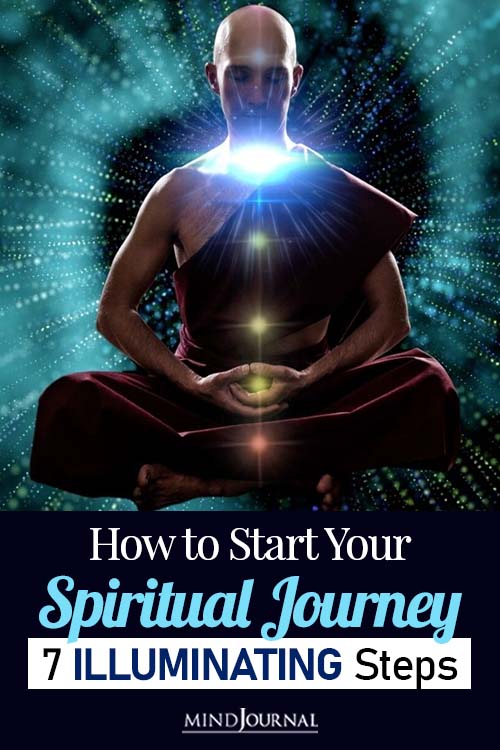
— Share —
— about the author —, leave a reply cancel reply.
You must be logged in to post a comment.

8 Eye-Opening Signs You’re Settling For Less In A Relationship

How to Stop Seeking External Validation and Start Loving Yourself

Parentification: How To Know If You Grew Up Too Fast
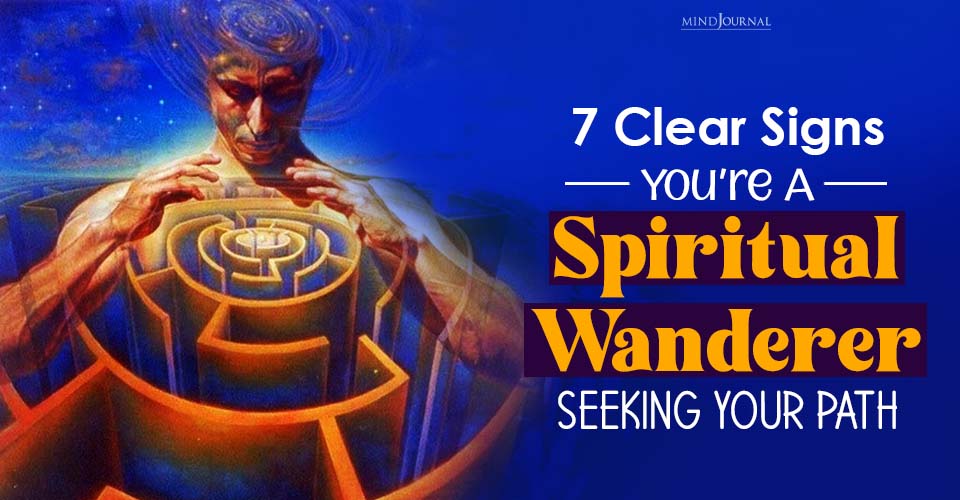
Are You a Spiritual Wanderer? 7 Telltale Signs to Watch For
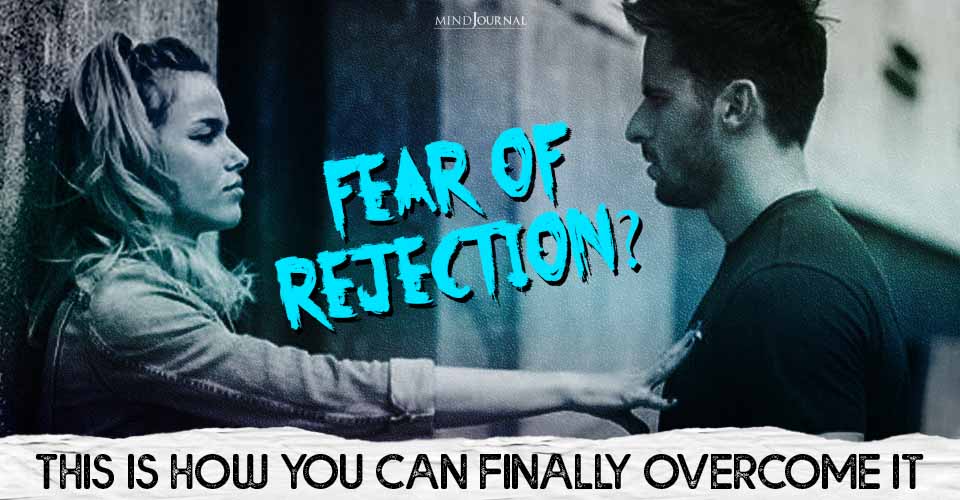
Fear of Rejection? Here’s How to Finally Overcome It

7 Nosy Questions That Are Totally Out of Line!

Do you know what a spiritual wanderer is? And if you do, have you ever felt like one? If you are someone who is constantly searching for deeper meaning, exploring different spiritual paths, and feeling like you don’t quite fit into the traditional molds, you might be one.
Being a spiritual wanderer means you’re on an endless journey of self-discovery, always curious, always seeking. This path isn’t about finding a final destination; it’s about the journey itself. Sounds very intriguing, doesn’t it?
Well, today we are going to do a deep dive into the world of “Wanderer Spirituality” and find out the signs you are a spiritual wanderer? Let’s get started then.
Are You Spiritually Gifted? 7 Subtle Signs You Should Know!
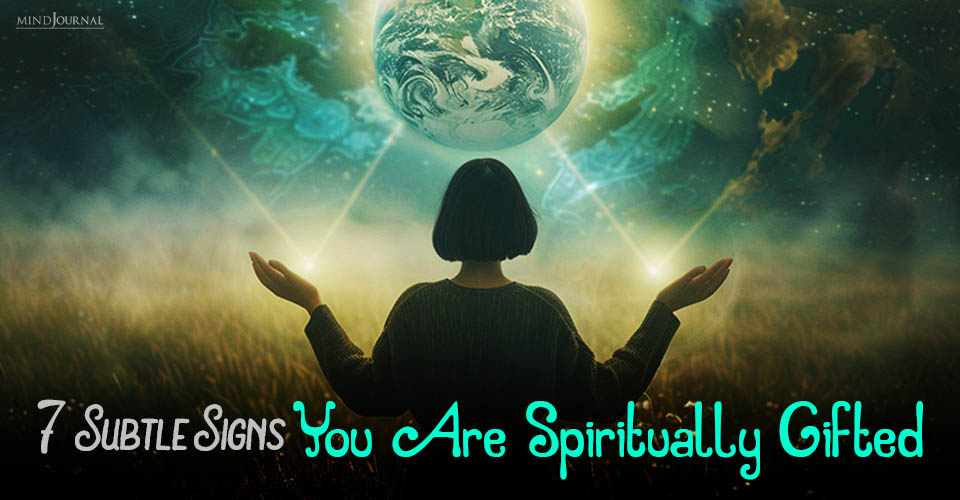
Every now and then, you might catch yourself feeling a deeper connection to the world around you—something that’s hard to explain, yet impossible to ignore. It’s as if there’s a quiet whisper guiding you, showing you things others might miss. These moments could be more than just coincidences; they might be signs of a rare spiritual gift. These gifts often don’t shout for attention but reveal themselves in subtle, beautiful ways. Today, we’ll discuss seven subtle signs you are spiritually gifted to help you find the hidden magic within you.
7 Telltale Signs You Are Spiritually Gifted
1. you feel things before they happen.
Do you ever get a gut feelin
7 Signs Of Spiritual Awakening (But Beware of These 7 Traps!)
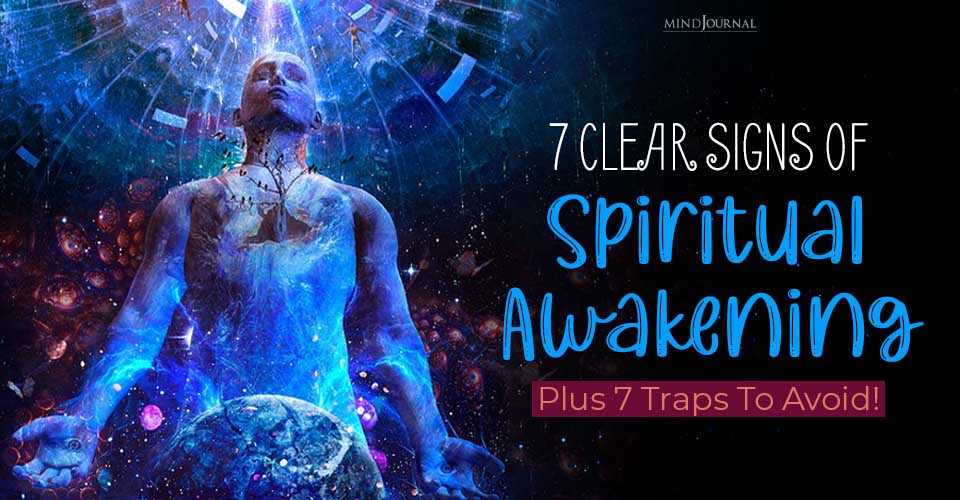
Spiritual awakening is a lot like stepping into a new dimension of understanding. It can be confusing and lonely at times, but it’s also incredibly profound and beautiful. As you go through this transformation, you will notice that the things you once valued—like money, fame, or power—no longer hold the same allure. Instead, you start to crave something deeper, something more authentic. However, whether you are going through a spiritual awakening is not always clear since there are so many false alarms. But fret not, in this article, we will discuss some telltale signs that you are having a spiritual awakening, and also some common false signs of spiritual awakening.
What Is Spiritual Awakening?
A spiritual awakening means reconn
The Art of Naked Yoga: 8 Enlightening Benefits For Beginners
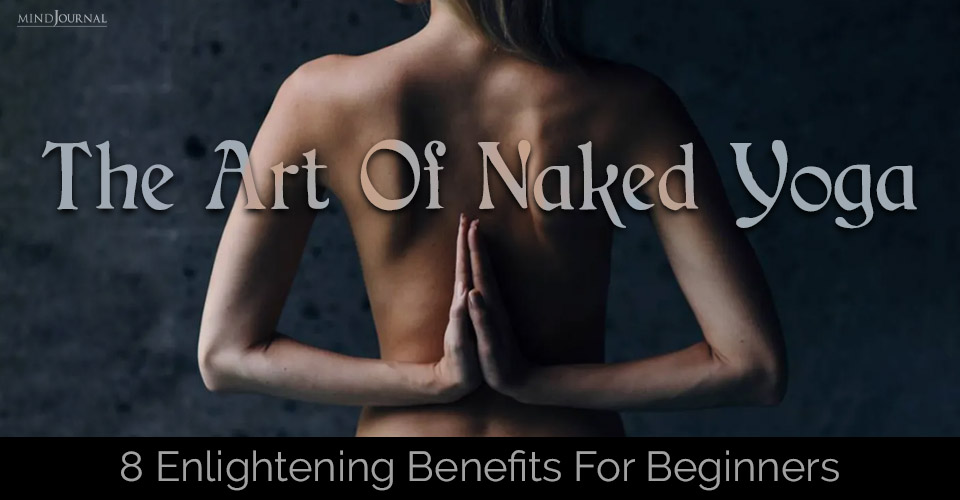
Naked yoga, also called nude yoga practice, has been getting a lot of attention lately. The reason is that it has a unique approach to physical and mental health. Let’s learn more about this!
Naked yoga takes you beyond the usual benefits of yoga, such as increased flexibility, strength, and stress relief. It brings you closer to your true self.
So let’s find how nude yoga mindfulness changes your life!
The Histor READ FULL ARTICLE ⇲ .ai-rotate {position: relative;} .ai-rotate-hidden {visibility: hidden;} .ai-rotate-hidden-2 {position: absolute; top: 0; left: 0; width: 100%; height: 100%;} .ai-list-data, .ai-ip-data, .ai-filter-check, .ai-fallback, .ai-list-block, .ai-list-block-ip, .ai-list-block-filter {visibility: hidden; position: absolute; width: 50%; height: 1px; top: -1000px; z-index: -9999; margin: 0px!important;} .ai-list-data, .ai-ip-data, .ai-filter-check, .ai-fallback {min-width: 1px;} Up Next Starseeds And Lightworkers: 8 Jaw-Dropping Differences You Won’t Believe
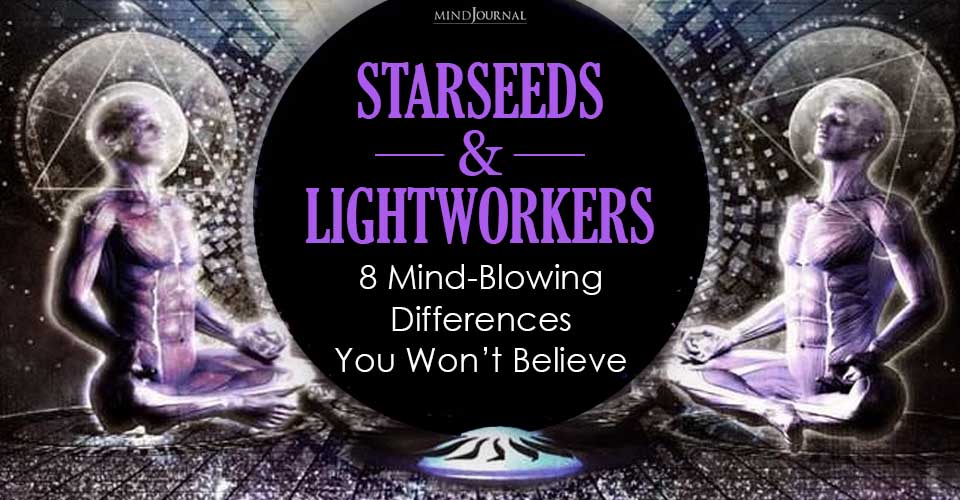
Most people seem to be of the belief that a Lightworker and Starseed is the same, and there’s hardly any difference between them. Well, that’s not really true. There are actually quite a few differences between Starseeds and Lightworkers, and if you’ve heard these terms thrown around and aren’t sure how they stack up, you’re not alone!
Starseeds and Lightworkers may seem similar, but they’re worlds apart in some pretty fascinating ways. In this post, we’re diving into 8 incredible differences that will make you see them in a whole new light.
If you have ever asked yourself “Am I a Starseed or Lightworker”, then we are going to help you answer that question today. But before that, let’s talk a bit about what is a Starseed and what is a Lightworker.
Is the Universe Playing Cupid? Here’s How to Tell If You’re Meant to Be
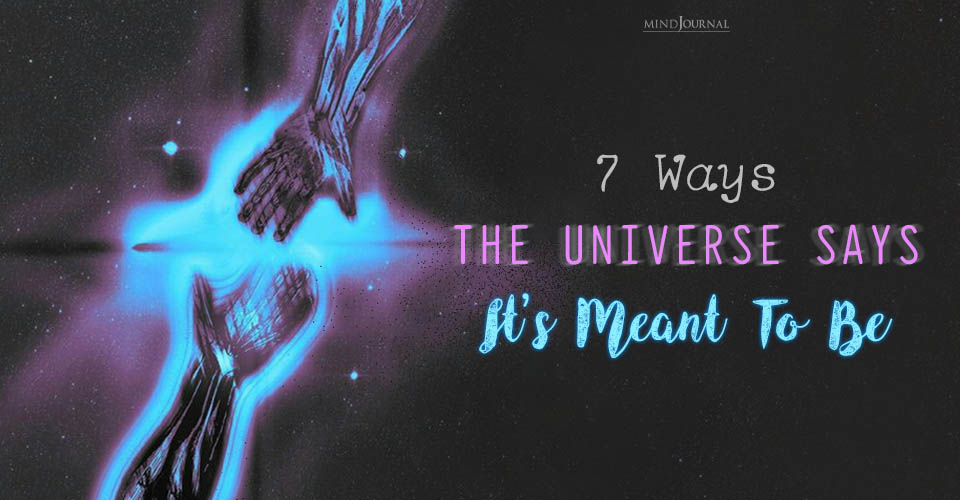
Have you ever felt like the universe is dropping hints that you’re meant to be with someone? Maybe it’s those unexpected encounters, the way their name keeps popping up, or the sense that everything around you is pushing you closer together. It’s almost like all the forces of nature want you two to be together. But what if all of this is just a co-incidence? How do you know if the universe wants you to be with someone for sure? Let’s dive into some unmistakable signs that the universe wants you to be with someone.
Could it be fate, or is it just wishful thinking? Let’s find out together!
7 Signs Universe Wants You To Be With Someone
Well, if you are a spiritual person, you probably know that the universe is always giving us
September Spiritual Guidance 2024: Channeled Messages for Each Zodiac Sign

As we step into September 2024, the energies of the universe point to introspection and renewal. Take a look at this month’s free spiritual guidance for your zodiac sign!
It is potent and offers you an opportunity to realign with your higher self and embrace changes or growth.
Explore the spiritual advice and insights provided below as they can help navigate your path and enhance your spiritual journey. Learn what each astrological sign can expect this month, with channeled messages to guide your path.
What is spiritual guidance?
If you’re wo
— Follow Us —
- Skip to main content
- Skip to primary sidebar

This topic is part of the Spiritual Calling stage of the Spiritual Wanderer's Journey
How to Start Your Spiritual Journey (7 Illuminating Steps)
by Mateo · Updated: Sep 7, 2024 · 217 Comments

There is a candle in your heart, ready to be kindled. There is a void in your soul, ready to be filled. You feel it, don’t you? – Rumi
Welcome, dear spiritual wanderer.
You’ve come to this page seeking guidance, and that’s what we intend to give you wholeheartedly.
Before you begin, we want to honor your self-sovereignty and inner instincts , so:

Please remember to not accept anything as being “true” that I write or anything that anyone on the spiritual journey says/writes/teaches without first checking in with your own inner knowing.
No one is infallible, no matter what degree of awakening they have embodied, so I strongly encourage you to think for yourself, find out for yourself, and always, always trust your intuition. (This advice can save you a lot of pain on your journey!)
With that said:
If you’re short on time, scroll down to see the Table of Contents . Otherwise, I guarantee that this article is worth reading from start to finish (that’s why it’s the ‘Start Here’ page!).
Get Your Spiritual Journey PDF!
Want to go deeper and reflect, integrate, and gain a greater perspective of your journey of awakening?
Let’s begin with the uncomfortable truth:
Most of us in the modern world have resigned ourselves to a cliched existence, indulging in endless distractions.
We go through life with minimal or pseudo-faith and avoid comprehending the emptiness of our lives. We are endlessly haunted by the shallowness of our relationships, neurotic issues, and inescapable loneliness.
And yet there’s so much more to us as a species than what we really know.
Dissolve the shadows that obscure your inner Light in this weekly email-based membership! Perfect for any soul seeker serious about practicing ongoing shadow work and self-love.
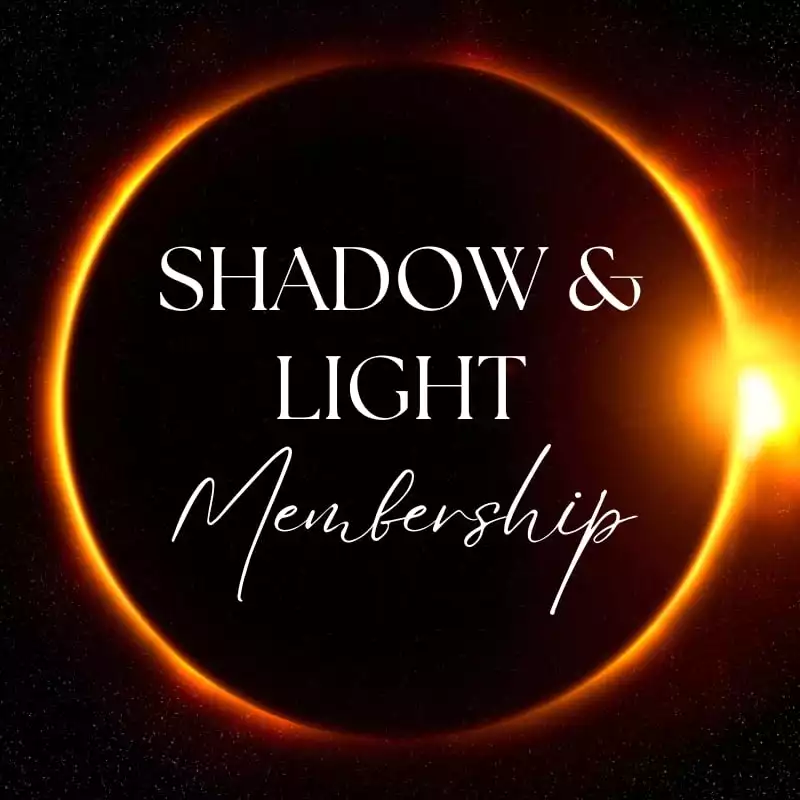
You and I carry the most mysterious and magnificent qualities within us imaginable. Yet, we unknowingly guard and protect the greatest gift that is our Souls from the world.
It’s so easy for us to feel meaningless when we perceive ourselves as mere cogs in society’s machine.
The truth is that we are much more than slaves of 9 to 5 jobs. We are capable of creating deeply meaningful, mystical, and fulfilling lives. We are capable of finding our true calling and personal destiny.
For centuries, indigenous people throughout the world have known that to fully explore the depths of the Soul and reunite with Spirit, we must go on a spiritual journey into the unknown lands within ourselves.
Many ancient cultures had Elders and Shamans to encourage and oversee these journeys toward a deeper spiritual existence.
Sadly, these days in our own culture, we have lost such sacred rites and rituals. Instead, orthodox religion has replaced living spirituality with a theoretical god , dismissing, and outlawing personal experimentation and union with the Divine.
On this page, my aim is to help you start navigating your spiritual journey, be a lone wolf, and listen to your soul’s calling to reunite with Spirit.
(If you need extra in-depth support after reading this article, I highly recommend checking out our All-in-One Bundle and Shadow & Light Membership – these offerings can offer tremendous illumination and empowerment on your journey.)
Table of contents
What is the spiritual journey, 12 signs you’re called to the spiritual journey (the ancient hero/ine’s path), the 3 worlds of the spiritual journey (which are you inhabiting), inner work vs. soul work, 5 phases of the spiritual wanderer’s journey, how to start your spiritual journey (7 steps).

The spiritual journey is a personal quest we undertake to reconnect with our Souls, release attachment to the ego, and rediscover our True Nature .
In a nutshell, the spiritual journey is about returning to the Centre of our being : it’s a path traditionally undertaken by saints, shamans, mystics , and sages.
Would you like to save this?
We'll email this article to you, so you can come back to it later!
I agree to also receive the free weekly newsletter
Your information will never be shared.
But in this day and age where times have changed, and we’re suffering from collective soul loss , the spiritual journey is open and accessible to all people (and no longer just ascetics, monks, and other holy people).
Indeed, listening to our Soul’s calling of reuniting with Spirit is our deepest longing and highest calling as a species.

People have felt a pull toward something greater than themselves since the beginning of time.
Ancient cultures had many stories that illustrated the journey to fulfilling one’s destiny and experiencing Wholeness or Enlightenment . These journeys are what mythologist Joseph Campbell described as the “ Calls to Adventure. “
A call to adventure is something we all experience at least once in life. When we embark on this adventure, we begin the process of gaining self-understanding, reclaiming our precious Soul gifts, and dissolving the blockages that obscure our Inner Light.
The archetype of the hero/heroine discovering their true spiritual nature goes back thousands of years.
The Greeks told the story of Orpheus , who descended into the underworld to rescue his bride, Eurydice, from Hades. The Nordic people had their hero-warrior Beowulf , and the Sumerians wrote of Inanna , who battled her sister in the dark world.
Throughout history, there have been so many stories of individuals who have struggled through hardship to find themselves. But of what importance are they to our path?
Essentially, these hero/ines symbolize our spiritual journeys , that is, leaving everything familiar behind, entering the unknown, encountering numerous unconscious monsters, and finally returning back home with a sense of renewed fulfillment and wisdom.
Here are 12 signs you’re being called to walk the spiritual journey of awakening:
- You feel lost in life
- You long for a place that feels like your ‘true home’
- You keep wondering what your meaning or purpose is
- You feel like you have a big destiny to fulfill (which is yet to be revealed)
- You sense that there’s much more to life than meets the eye
- You’re experiencing strange synchronicities, signs, and omens
- You’re shedding your old self and you’re transforming, but you don’t know who you truly are yet
- There’s a sense of nostalgia and nagging longing for something you can’t pinpoint
- You experience bouts of melancholy, depression, and existential crisis
- You feel extra sensitive and fragile
- A lot of what you once valued seems meaningless and empty
- It feels like the rug has been pulled out from underneath you, and you’re falling into a void
Can you relate to any of the above signs? If you can, you’re most certainly being called to embark on the spiritual journey.
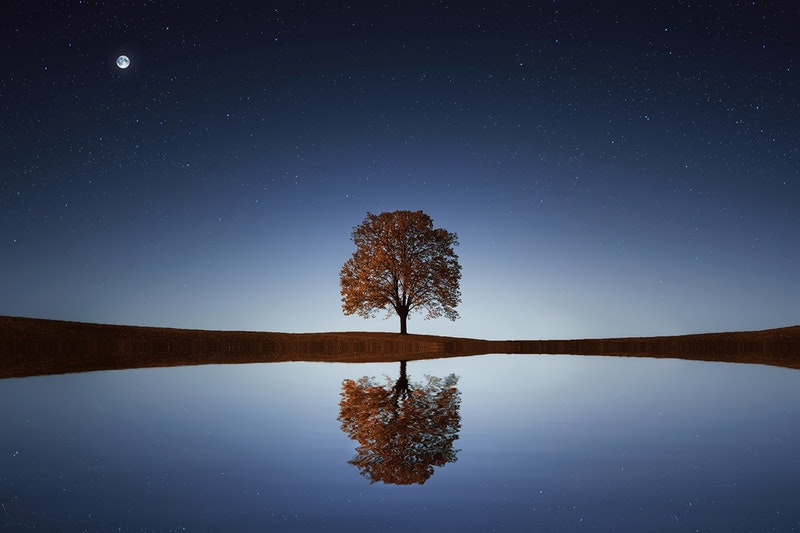
The breeze at dawn has secrets to tell you. Don’t go back to sleep. You must ask for what you really want. Don’t go back to sleep. People are going back and forth across the doorsill where the two worlds touch. The door is round and open. Don’t go back to sleep. – Rumi
At some point in life, we all experience the “call to adventure.”
Often, our journeys start when we experience a sudden spiritual awakening , kundalini awakening , or dark night of the soul . Often, without wanting to, we are cast onto the path of inner exploration.
Like you, I have wandered these paths and have, at times, wound up lost and confused. For this reason, I find it useful to map out the spiritual journey in a way that helps the human mind know where it is and where it will go next.
My Andean ancestry speaks of three worlds that we can experience in life: the Upper World (Hanaq Pacha), the Middle World (Kay Pacha), and the Lower World (Ukhu Pacha).

In many traditions and mythologies, these three worlds correspond to the different realms of Self.
The Upper World is the home of Spirit, the Underworld the home of Souls, and the Middle World is the home of the physical body and human ego .
Different practices and techniques are used in each of the three realms to help us spiritually mature and rediscover joy, peace, and nondual wholeness .
Below, I’ll explore each of these three realms with you:
Middle World

Purpose: Personality development
In our everyday lives, we function within the middle world. The middle world is responsible for our ego development, and yet many people on the spiritual path ignore this vital element of inner growth.
Without developing a healthy personality, our spiritual growth reaches a dead end because we are more prone to falling into many spiritual traps and pitfalls down the line (such as spiritual narcissism , spiritual materialism, and more).
In life, we all begin within the middle world or physical realm. As children and teenagers, we go through various years of personality change and growth.
Finally, as adults, we have all developed unique personalities. Yet many of us fail to continue our self-development, getting lost in corporate jobs and the pursuit of money, status, and fame.
The goal of the middle world path is to develop a healthy personality or ego. Tasks involved in this process include the exploration of core emotional wounds, self-love , and the cultivation of authenticity.
A healthy adult ego will be able to love freely, be vulnerable, express creativity, and display empathy towards others – which are vital in every area of life.
We cannot develop a healthy personality by using techniques from the Upper or Under World, such as meditation or shadow work.
Instead, we must use inner work techniques that pertain to ego development and healing, such as assertiveness training, non-violent communication techniques, cognitive behavioral therapy, NLP, and other psychological avenues of self-development.
Under World
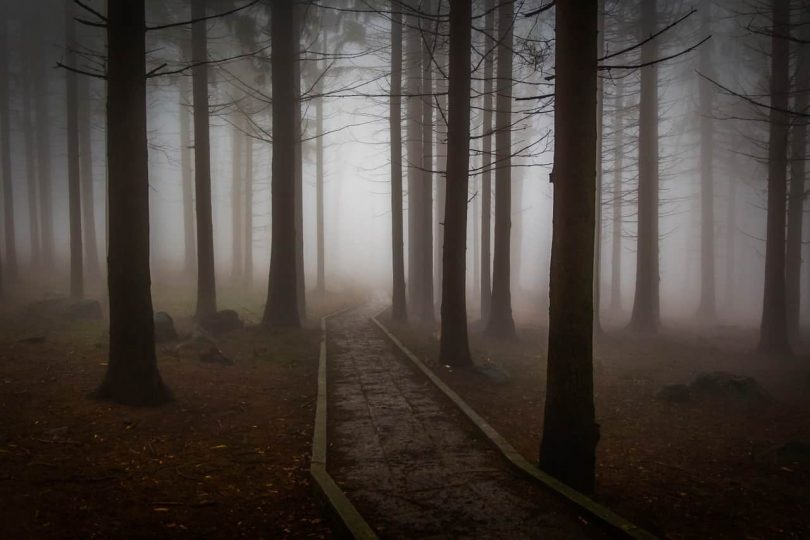
Purpose: Soul discovery
Our Soul is the vital, mysterious, and wild core of our individual selves. It is the unique essence within each of us that goes deeper than our personalities.

Think of your Soul as a stream that is connected to the ocean of Spirit. Our Souls contain our destiny, purpose, gifts, and the ultimate significance of our individual lives. To access these deep layers and qualities, we must descend into the Under World of our unconscious minds.
Unfortunately, for thousands of years, our culture has “protected” us from the hardships and dangers of the descent into the Soul. This has been done through the establishment of comfortable, predictable, and clockwork lives that revolve around material pleasures and shallow values.
In fact, thanks to religious thought, the descent into our Under Worlds has been condemned as “evil” and wayward. Only Shamanic cultures and a few Western mystical schools like Hermeticism and Alchemy have dedicated themselves to exploring the Under World.
The descent into the Under World has been so feared and avoided because it is a perilous journey. There is a reason why Christianity referred to this place as “hell.”
Within our Under Worlds lie our repressed thoughts, feelings, desires, traumas, and denied gifts. Often when we descend, or inscend, into ourselves, we come across many demons, ghastly creatures, and other parts of our Shadow Selves that we’ve been unconsciously hiding from.
Yet despite the fact that the Under World journey can be such a harrowing and haunting experience, it is ultimately a powerful odyssey. Only by descending into our personal Under Worlds can we truly embrace our true life calling, talents, gifts, and deepest values.
Under World, or deeper inner work techniques, include practices that allow us to access altered states of consciousness . These may include practices such as lucid dreaming , drumming, shadow work , shamanic trances, breathwork , vision quests, etc.
Upper World

Purpose: Uniting with Spirit
The Upper World journey, or that of the ascent, is what we often refer to as Self-Realization .
There comes a moment in our journey between the middle world and the underworld in which an equilibrium or inner spaciousness forms , allowing us to move up into the Upper World.
For example, it’s much harder to spiritually awaken to the Upper World when our unconscious minds are plagued with deep childhood traumas (that stem from the underworld), trust issues (under world problem), and poor self-esteem (middle world problem).
The practice of inner work is what allows this inner space to emerge because it dissolves the contractions of the ego that hide our True Nature as Divine Consciousness.
We enter the path of ascent up into the Upper World when we learn to surrender our ego identification (known as ego death ) and Soul identification.
It’s at this point of the path that soul work is needed – soul work, in this case, refers to doing the soul’s work of letting go, opening, and merging back into its original home of Spirit.
The experience and realization that the personal identity (or ego) is an illusory thought construct, and who we truly are is Infinite Consciousness, is what has been referred to as Self-Realization , Christ Consciousness , Buddha Nature, Nirvana, or Enlightenment.
If this post has inspired or helped you in any way, we'd be incredibly grateful if you would consider donating to keep us alive and running. LonerWolf has been a two-person labor of love for 12 years so far. Any amount, big or small, would mean the world to us.
This shift of consciousness involves our Infinite, Divine, Eternal, and Absolute Nature awakening from the dream of the separate egoic self.
Techniques used to induce this inner shift of being are often found in the mystical schools of Zen, Kundalini, Taoism , Sufism, and disciplines such as meditation, self-inquiry , and yoga.
Note: Unfortunately, many people in the spiritual community believe that spiritual ascension is all that is needed to experience peace and wholeness. As a result, the middle world and under world paths have been cast aside as if they don’t matter.
However, only focusing on your “higher chakras,” cultivating positivity and Oneness with Spirit , creates lopsided individuals. When the darker and more down-to-earth elements of self-growth are ignored, the result is imbalanced and unhealthy individuals .
As such, here on lonerwolf, we try to focus on exploring all three realms (the middle, under, and upper world) to create balance.

In the previous section, I mentioned inner work and soul work a few times. But what’s the difference? And how do both relate to the spiritual journey?
Within this website and the work of Aletheia and I, inner work refers to the active exploration, illumination, and dissolution of blockages within the psyche.
Inner work is a psychological process that helps us to heal and find inner harmony and wholeness on a human level.
Examples of inner work practices include the practice of self-love, inner child work, shadow work, body work, and anything that involves actively finding and releasing the contractions within the mind.
On the other hand, soul work is the more passive and receptive process of opening, surrendering, and resting within our True Nature (also known as Consciousness, Presence, Nondual Awareness, and Spirit).
Soul work is, quite literally, doing the soul’s work of remembering and returning back to Source as our Ultimate Home and True Nature.
Examples of soul work practices include self-inquiry, prayer, contemplation, meditation, mirror work, and anything that involves cultivating a sense of being .
Both inner work and soul work are needed on our spiritual journeys to help us both wake up on a spiritual level and grow up on a human level.
To avoid lopsided development and getting possessed by unresolved inner shadows (which can and do arise no matter what level of realization we’ve had), we need to explore both our human psychology and relax into our birthless, deathless True Nature.
Inner work makes the inner space for soul work to take place. Soul work helps to illuminate and sharpen our inner work.
Sign up to our LonerWolf Howl newsletter
Get free weekly soul-centered guidance for your spiritual awakening journey! (100% secure.)
Both go hand-in-hand and are vital allies on our spiritual awakening journeys. As you get familiar with this website and our work, you’ll hear about both inner work and soul work.

Roughly speaking, there are about five phases of the spiritual journey (although, of course, there could be many more – but I’m just sharing the phases I’m presently aware of).
I refer to these as ‘ phases ‘ and not stages because the spiritual wanderer’s journey is not a linear process that has a start and end; it is cyclical. It’s like the moon. It’s a spiraling dance of energy that is ever-deepening and changing – there is no “end,” even after you’ve had an enlightened shift in awareness.
Here’s a visual diagram of the Wanderer’s Journey , which is the spiritual wheel of transformation that we base our work around on this website:

Below, you’ll find the five phases ruled by the Seeker, Apprentice, Warrior, Mystic, and Sage archetypes.
I’ve also linked each phase to the ten different parts of the journey that Aletheia and I have discovered, crystallized, and defined after many years on the path:
1. Soul-searching
(Ruled by the Seeker archetype.)
This phase is divided into the following two parts (also linked to on the Wanderer’s Journey page). Feel free to click on any for further guidance:
- The Spiritual Calling
- Resisting the Path
Summary: Phase one of the spiritual journey begins with a deep craving and longing for something more than mundane daily life.
There may be a sense that life has become a dry, desolate, meaningless, and barren wasteland without some kind of spiritual dimension.
This type of existential crisis can arise spontaneously due to a traumatic situation, mental or physical health issues, or simply due to one’s sensitive temperament.
The result is a search for meaning, purpose, and greater spiritual connection – or what is commonly known as soul searching .
2. Awakening & learning
(Ruled by the Apprentice archetype.)
- Finding Guidance
- Starting the Journey
Summary: Awakening and learning is the next phase of the spiritual journey. Once one has listened to the ‘call to adventure’ and has begun searching for answers, the sense of inner deadness and stagnation lifts. The veil is pulled from our eyes. We awaken to fresh possibilities, new horizons, and deep insights.

There is renewed hope, ecstatic zest for life, joyful anticipation, and a passion for learning, exploring, and growing. It’s as if the sun has finally emerged from its slumber, and we’re bathed in the dawning light of spiritual awakening .
3. Death & demons
(Ruled by the Warrior archetype.)
- Turning Inwards
- Facing the Darkness
Summary: As our spiritual journey matures, we eventually face a crossroads. To continue growing, we must enter through the gates of our personal Underworld and face our demons. We learn that the spiritual journey is beautiful, yes. But it’s also demanding.
If we’re sincere about authentic spiritual growth, we need to illuminate our inner darkness, explore our shadow selves, and heal our buried traumas. This death of the spiritual ‘high’ of the previous phase can lead to much fear and confusion.
The result is often an experience of the Dark Night of the Soul , a glimpse of ego death , or even a spiritual emergency where we step out of the ‘sunshine and rainbows’ world into the moonlit world of ghosts and ghouls.
4. Rebirth & reward
(Ruled by the Mystic archetype.)
- Illumination
- Traps & Pitfalls
Summary: Eventually, we emerge from the other side of the Dark Night of the Soul, existential crisis, or ego death glimpse. We have been to hell and back and we’ve had our hearts ripped open and our minds excavated. But we arise victorious with heart and Soul blazing bright with clarity.
This rebirth and reward phase often results in mystical experiences , moments of Satori (Enlightened awareness), and blissful heart openings.
We may go through a new level of awakening, this time at an energetic level, via an experience known as the Kundalini awakening .
However, this experience is not all love and light. There are many lurking shadows and spiritual traps to be wary of .
5. Illumination & sharing
(Ruled by the Sage archetype.)
- Integration
Summary: After the body, heart, and mind undergo this cleansing and purging journey, a deeper level of Illumination may begin to arise within us. We’ll begin to integrate all the lessons we’ve learned, bringing them into our daily lives.

This is the moment where we truly start walking the talk, integrating both the human and Divine aspects of our lived experience. As such, there is a strong desire within us to share what we’ve realized through the grace of Divinity (our True Nature) with those who need support.
We may adopt the role of teacher, guide, creator, or mentor – or otherwise, embrace new ways of helping others through the power of creativity.
Perhaps the key defining quality of this phase is a strong connection to one’s True Nature and sometimes a non-dual shift in awareness. There’s an intimate, inner-lived experience of the Divine as one’s true face, authentic essence , and ultimate home.
Again, the above five phases are by no means linear or static – they are cyclical and ever-deepening. Gradually, we discover that we are Life itself and that what we have longed and searched for has always been right here, right now !

Everyone’s spiritual journey is unique, ever-changing, and ongoing.
There is no single point at which we stop this inner transformation. In fact, the whole mistaken idea of reaching a state of “perfection” really only equals death and stagnation.
And what happens when things stop growing and flowing? They become lethargic, break down, rot, and disintegrate.
While the demands for constant growth and evolution may be difficult to handle at times, they are necessary grit for the inner pearl to develop.
If you wish to find truth, peace, profound love, deep freedom, and your ultimate home, beginning your spiritual journey is not only important but crucial.
Understandably, you might feel a bit intimidated and lost, not knowing where to start. As someone who has been on the spiritual journey for a long time and who has devoted their entire life’s work to the inner call, here are my tips:
1. Be gentle and go at your own pace
It’s normal to feel overwhelmed and a little inundated by the influx of information when first beginning your spiritual journey. My advice is to go slowly, be gentle, and go at your own pace. You don’t need to know every tiny detail of every field of wisdom ever created. (I know it’s tempting!)
Besides, everything that you’re learning about is already within you. Yes, you have all the answers you need at a Soul level because you are an expression of the Divine at your core. Everyone else is just a mirror of that.
So cut yourself some slack. The key is to go gently but deeply – that is how you will learn and grow the most.
2. Tune into the deepest yearning of your heart – your holy longing
What is it that you truly, deeply yearn for, above all else? What is the most ancient longing of your heart and Soul?

There are a myriad of reasons why people enter the spiritual journey, many of them stories created by the mind to build a better-looking ego.
But beneath the desires of the mind, what does your heart want? Your heart is the doorway to your Soul, and your Soul is a unique expression of Spirit. So listen to your heart’s yearnings.
How do you listen to your heart? One of the best ways is to place a soft hand over your heart, let all thoughts go, and drop into a sense of stillness. Then ask yourself, “What is it that I truly, deeply yearn for, above all else?”
Do you long for peace, truth, freedom, love, happiness, healing, or something else? There are no right or wrong answers. The heart wants what it wants.
But be aware that the mind may jump in and try to concoct a bunch of ideas, artificial longings, and idealistic stories. What you need to do is listen for the still, small, quiet voice within that responds with gentle clarity (not the loud, anxious, and abrasive voice of the mind).
Finding your holy longing will provide you with the fuel and compass to direct your spiritual search.
Instead of being outwardly led by the egoic self, you’ll be inwardly led by the heart and Soul. You may even find that as you progress through your spiritual journey, your holy longing will evolve and mature. Let it!
3. Pay attention to philosophies, tools, or practices that intrigue you
Once you’ve figured out your holy longing, simply pay attention. Notice what spiritual fields, ideas, philosophies, and practices call to you that relate to your deepest calling.
The spiritual journey doesn’t have to be something dry, monotone, and repetitive (unless you want it to be). This is a quest that can be playful, joyful, and passionate.
In fact, you’ll likely get the most out of your spiritual path if you approach it from this heart-centered place.
Neuroscience has proven that we learn the most when we’re having fun – so find your bliss. Walk a path with heart. This is the path you’re meant to be on.
4. Go deep-diving

One of the main issues that often arises on the spiritual path is a certain kind of spiritual materialism or spiritual window-shopping .
Jumping from practice to practice can be useful at the beginning (to become familiar with the territory).
But if we get into the addictive habit of finding the “next and best” spiritual practice , tool, workshop, etc., we are doing ourselves a great disservice.
We are not only approaching spirituality with a materialistic mindset, but we’re also avoiding the fundamental purpose of the spiritual path: to discover our True Nature.

Once you’ve done some dabbling here and there (this might involve watching YouTube videos, reading books, attending workshops, etc.), it’s time to slow down and commit to something.
Don’t worry if you discover later down the road that the path you’re on is not for you – remember that you can always change routes.
What’s important is that you slow down and commit to something to begin with – this is the only way to extract the nutrients, deep essential truths, and embodied wisdom that contribute to your awakening.
So go deep-diving and commit to something all the way through to the end. What paths, practices, and teachings speak to you on a profound level? What has benefited you the most?
Begin to circle around that topic, practice, or path and dedicate your full attention to it. (And if there are a handful of paths, that’s okay too; stick with them, although it’s generally best to keep your focus simple.)
5. Be aware of sharks
You’ll meet many people on your spiritual path (whether online or in the flesh), and while some of these people will genuinely have your best interests in mind, others won’t.
Yes, there are many ‘spiritual sharks’ out there, aka., there are sleazy, snake-oil salesmen and women who are incentivized to use you for personal gain.
There are also some people – typically leaders of spiritual communities or certain gurus – who are totally unaware of their unconscious shadow motivations (but are equally as dangerous). So be discerning.
Learn to trust your intuition and gut instincts . Tap into your inner lone wolf : that primal wisdom you carry inside that drove you to begin this quest to begin with.
Even if you do fall into the jaws of a shark, know that you can get out. Not only that, but you can actually use the experience as a lesson and fuel to grow even stronger.
No one can take away your power from you unless you willingly give it to them. And even if you do, you can get it back.
6. Record what you’ve learned and experienced
We hear a lot of pretty-sounding words and mystical ideas on the spiritual path. But all of them mean little if we don’t actively find ways of absorbing them into our being.
One of the simplest ways of recording what you’ve learned and experienced is simply through the act of journaling .
Have a special journal or diary that you dedicate to writing down your thoughts, experiences, ideas, and discoveries. You don’t need to be a good writer (or even good at spelling/grammar) to do this – forget about that!
What matters is that you have a solid record that you can refer back to throughout your journey. (Learn more about how to journal .)
There are also other ways of recording what you’ve learned and experienced, such as creating pieces of art or composing music.
Find whatever creative outlet suits you the most – that might even include creating a vlog where you go into your daily experience (and you can keep this private or share it with others).
Here are a variety of inner work Journals that we’ve created that might help you get started. »
7. Integrate and embody your spirituality
It’s easy to go spiritual window shopping and jump onto whatever new and exciting bandwagon emerges. But it takes much more strength of character, sincerity, and courage to integrate and embody what you’ve learned actively.
To integrate means to absorb something into your being and to make it a living and breathing part of you.
To embody means to be an expression of what you have learned: to be the change you’re looking for, to infuse your life with the essence of what you’ve discovered.
There are numerous ways to integrate and embody your spirituality, but remember that this is an organic process that takes time. You cannot rush or force spiritual integration or embodiment – it is the natural product of spiritual ripening and maturation.
There are, however, numerous ways to begin the integration and embodiment part of your journey. Some of these inner work and soul work practices include:
- Mindfulness
- Contemplation
- Shadow Work
- Inner child work
- Self-Inquiry
Anything that helps you to slow down, be introspective, and go inwards while encouraging present-moment awareness will help you to integrate and embody what you experience.
Instead of being a magical-sounding idea, you will actively live and express qualities such as lovingkindness, presence, and wisdom. But first, you need to be sincere and dedicated to this path.
In my honest opinion, no spiritual journey is balanced (or healthy) without some level of psychological healing.
We need to focus not just on ascending to the Upper World but also on working with the Middle and Under World . See the following articles for more guidance:
- What is Inner Work? (& Why Most People Are Terrified By it)
- Spiritual Psychology: Why Meditation Isn’t Enough
The Spiritual Journey is a Valley, Not a Mountain

Wisdom tells me I am nothing, love tells me I am everything. Between the two, my life flows. ― Sri Nisargadatta Maharaj
Contrary to popular depiction, the spiritual journey isn’t like climbing a mountain.
We rarely start at the bottom and climb to the top. Instead, for most of us, the spiritual journey is like hiking through a series of beautiful but perilous range of valleys.
Our spiritual journeys alternate between periods of descending and ascending.
In one period of our lives, we may cultivate our connection with Spirit, while in other parts, we may descend to the Soul to heal core wounds or the middle world to develop self-care .
Finally, it is very possible and also quite common to get hung up in these valleys. Many of us become lost, distracted, and even forget why we were trying to get to the top of the mountain in the first place. (See our article on traps of spiritual growth for more guidance.)
However, with the appropriate guidance, sincerity, and persistence, we can make our way through.
In the end, you’ll find that the spiritual journey is like a mystical marriage between the ego, the Soul, and the Spirit. One cannot exist without the other. The whole experience is a nondual expression of Life living itself.
I truly hope this guide has given you a place to start. This whole website is based on giving free guidance for the spiritual awakening journey, so please feel welcome to poke around and learn some more.
It’s our calling in life to help you with this. And it’s an honor for the two of us to be your supporters on this journey.
To stay connected and get free weekly Soul-centered guidance, you’re welcome to subscribe to our LonerWolf Howl newsletter .
I also recommend checking out our collection of premium resources that can help you tremendously on your spiritual journey. You’ll find everything from books, journals, meditations, and more!
It’s a joy to continue this journey with you as guides and companions!
Three paths to inner transformation – here’s how I can help you go deeper:
1. The Spiritual Wanderer Course: Are you feeling lost, adrift, and unsure of your life's purpose? Gain clarity, focus, and direction on your inner path by uncovering the five archetypes of awakening within you. Learn how to navigate the highs and lows of your inner journey and chart your unique path with 3+ hours of audio-visual content, workbooks, meditations, and a premium test.
2. Shadow & Light Membership: Do you crave consistent support on your spiritual quest? Receive weekly intuitive guidance and learn to embrace your whole self, including your shadow side. Cultivate deeper self-love with our affordable, personalized support.
3. Spiritual Awakening Bundle: Ready to embark on a profound soul-searching adventure? Dive into our collection of essential transformative resources! Explore five illuminating eBooks and seven in-depth journals, plus unlock two special bonuses to empower your spiritual growth.
More Spiritual Calling

About Mateo
Mateo is a spiritual educator, guide, entrepreneur, and co-founder of one of the most influential and widely read spiritual websites on the internet. Born into a family with a history of drug addiction and mental illness, he was taught about the plight of the human condition from a young age. His mission is to help others experience freedom, wholeness, and peace in all stages of life. [Read More]
Support Our Work
We spend thousands of dollars and hundreds of hours every month writing, editing, and managing this website – you can find out more in our support page . If you have found any comfort, support, or guidance in our work, please consider donating as it would mean the world to us:
Custom Amount:
I'd like to receive your latest weekly newsletter!
This was profound.
Hi I was wondering if it is possible to get hard cover/paperback books instead of ebooks? I am very eager to read and do the workbooks but prefer to reference them physically in my hands rather than virtual. Thanks for all the information you have provided. Blessings to both of you, I look forward to a long relationship 🙏
Free worksheet won’t open
what has happened to me is amazing……i have started this jurney back in 1999 new years eve in a phyicword…then spiritualey slept until 2019…after that i woke i am now aware of masculine and feminine devine energy within myself…then this year i grounded myself to the earth…better…and i realised that the background noise in the back of my mind was accually all the thoughts and feelings of everyone living on planet earth…..i am comforteble with this now….
I am so thankful to have found Lonewolf! I thought I was the only one who felt this way. I am just beginning my spiritual journey and am all over the place. At 55 my past has entered every aspect of my life. Past trauma and insecurities run the show. I am looking forward to taking this journey and learning everyday from people like you.
I am grateful that during my search to at least try to understand the changes I have recently experienced, to have come across your website. I do not feel overwhelmed by the information that is given.
I am not a person to take information at face value, but rather learn the small nuances to understand the bigger picture and then process what I’ve learned.
The information on your site allows me to do so, without all the yippee congrats. For me, that’s shouting, which takes my focus of wanting to learn away.
I am appreciative of not feeling that and can calmly process the situation, thoughts, emotions and reactions and reflections.
I had neck surgery 4 years ago that pretty much stole my life. I’m in a great deal of pain. It makes me forget what I’m doing, thinking, and feeling. I’m doing tapping with a doctor with much success. I’m scared I will. I’m scared! I feel like a drowning man I’m grabbing for anything. I want to be happy. I don’t like using the word want it just brings more sadness. I’m going to stick with this but I would really like someone to stick with me while I walk this path for a little while. What can I do?
I have been reading about spirituality for quite a while now. Especially reading and listening to Tara Brach, but I am so much in what I’ve learned to call my egoic brain that I can’t quite grasp it. What I’ve read about your work sounds more accessible.
I am in a situation thatI cannot donate any money, is that ok?
- Slovenščina
- FAQ Technical Questions
- Text Translation
- Vocabulary Trainer
- Online Dictionary
- Login
- Online dictionary
- Products & Shop
- Conjugation
Vocabulary trainer
- Dictionary API
- Add to home screen
- Browse the dictionaries
- Terms and conditions of use
- Supply chain
- Data Protection Declaration
- Legal notice
- Privacy Settings
- Haitian Creole
- German Learner's Dictionary
- Dictionary of German Spelling
- Search in both directions
- Change language direction
My search history
Journey in the oxford-hachette french dictionary, journey in the pons dictionary, journey examples from the pons dictionary (editorially verified), monolingual examples (not verified by pons editors), translations for journey in the english » french dictionary (go to french » english ), i. journey [ brit ˈdʒəːni, am ˈdʒərni] n.
- Show synonyms for journey.
- Send us feedback
1. journey (trip) :
- Preselect for export to vocabulary trainer
- View selected vocabulary
2. journey (distance covered) :
3. journey (time taken) :, 4. journey (spiritual) :, ii. journey [ brit ˈdʒəːni, am ˈdʒərni] vb intr, return journey brit , return trip am n.
- Show synonyms for return journey.
Translations for journey in the French » English Dictionary (Go to English » French )
I. journey [ˈdʒɜ:nɪ, am ˈdʒɜ:r-] n, ii. journey [ˈdʒɜ:nɪ, am ˈdʒɜ:r-] vb intr.
Would you like to add a word, a phrase or a translation?
Browse the dictionary
- journalistic
Look up "journey" in other languages
Links to further information.
You can suggest improvements to this PONS entry here:
We are using the following form field to detect spammers. Please do leave them untouched. Otherwise your message will be regarded as spam. We are sorry for the inconvenience.
How can I copy translations to the vocabulary trainer?
- Collect the vocabulary that you want to remember while using the dictionary. The items that you have collected will be displayed under "Vocabulary List".
- If you want to copy vocabulary items to the vocabulary trainer, click on "Import" in the vocabulary list.
Please note that the vocabulary items in this list are only available in this browser. Once you have copied them to the vocabulary trainer, they are available from everywhere.
- Most popular
- English ⇄ German
- English ⇄ Slovenian
- German ⇄ Spanish
- German ⇄ French
- German ⇄ Greek
- German ⇄ Polish
- Arabic ⇄ English
- Arabic ⇄ German
- Bulgarian ⇄ English
- Bulgarian ⇄ German
- Chinese ⇄ English
- Chinese ⇄ French
- Chinese ⇄ German
- Chinese ⇄ Spanish
- Croatian ⇄ German
- Czech ⇄ German
- Danish ⇄ German
- Dutch ⇄ German
- Elvish ⇄ German
- English ⇄ Arabic
- English ⇄ Bulgarian
- English ⇄ Chinese
- English ⇄ French
- English ⇄ Italian
- English ⇄ Polish
- English ⇄ Portuguese
- English ⇄ Russian
- English → Serbian
- English ⇄ Spanish
- Finnish ⇄ German
- French ⇄ Chinese
- French ⇄ English
- French ⇄ German
- French ⇄ Italian
- French ⇄ Polish
- French ⇄ Slovenian
- French ⇄ Spanish
- German ⇄ Arabic
- German ⇄ Bulgarian
- German ⇄ Chinese
- German ⇄ Croatian
- German ⇄ Czech
- German ⇄ Danish
- German ⇄ Dutch
- German ⇄ Elvish
- German ⇄ English
- German ⇄ Finnish
- German ⇄ Hungarian
- German → Icelandic
- German ⇄ Italian
- German ⇄ Japanese
- German ⇄ Latin
- German ⇄ Norwegian
- German ⇄ Persian
- German ⇄ Portuguese
- German ⇄ Romanian
- German ⇄ Russian
- German → Serbian
- German ⇄ Slovakian
- German ⇄ Slovenian
- German ⇄ Swedish
- German ⇄ Turkish
- Greek ⇄ German
- Hungarian ⇄ German
- Italian ⇄ English
- Italian ⇄ French
- Italian ⇄ German
- Italian ⇄ Polish
- Italian ⇄ Slovenian
- Italian ⇄ Spanish
- Japanese ⇄ German
- Latin ⇄ German
- Norwegian ⇄ German
- Persian ⇄ German
- Polish ⇄ English
- Polish ⇄ French
- Polish ⇄ German
- Polish ⇄ Italian
- Polish ⇄ Russian
- Polish ⇄ Spanish
- Portuguese ⇄ English
- Portuguese ⇄ German
- Portuguese ⇄ Spanish
- Romanian ⇄ German
- Russian ⇄ English
- Russian ⇄ German
- Russian ⇄ Polish
- Slovakian ⇄ German
- Slovenian ⇄ English
- Slovenian ⇄ French
- Slovenian ⇄ German
- Slovenian ⇄ Italian
- Slovenian ⇄ Spanish
- Spanish ⇄ Chinese
- Spanish ⇄ English
- Spanish ⇄ French
- Spanish ⇄ German
- Spanish ⇄ Italian
- Spanish ⇄ Polish
- Spanish ⇄ Portuguese
- Spanish ⇄ Slovenian
- Swedish ⇄ German
- Turkish ⇄ German
Identified ad region: ALL Identified country code: RU -->

IMAGES
VIDEO
COMMENTS
Many translated example sentences containing "spiritual journey" - French-English dictionary and search engine for French translations.
Documentaire sur la vie de Bob Marley, sous-titré en français!Bon documentaire !
Principales traductions: Anglais: Français: spiritual journey n noun: Refers to person, place, thing, quality, etc. (personal religious experience) cheminement spirituel nm nom masculin: s'utilise avec les articles "le", "l'" (devant une voyelle ou un h muet), "un". Ex : garçon - nm > On dira "le garçon" ou "un garçon".Il a beaucoup évolué dans son cheminement spirituel.
By France.fr. The magazine of the destination unravels an unexpected France that revisits tradition and cultivates creativity. A France far beyond what you can imagine…. The spiritual places and pilgrimages sites in France from Cathedral to Sanctuaries, from Lourdes, Lisieux, Mont Saint Michel, Road to Compostella, Vezelay.
Translations in context of "spiritual journey" in English-French from Reverso Context: Unique experiences also for those who are looking for a spiritual journey. Translation Context Grammar Check Synonyms Conjugation
Many translated example sentences containing "personal and spiritual journey" - French-English dictionary and search engine for French translations.
religieux, religieuse adj. sacré adj. There are no institutions to serve the spiritual needs of the people. Il n'y a pas d'institution pour satisfaire les besoins spirituels des gens. spiritual adj. (supernatural) spirituel, spirituelle adj. I don't think you can blame a spiritual being for eating the cookies.
Traductions en contexte de "on a spiritual journey" en anglais-français avec Reverso Context : Her quest for justice and mourning process take her on a spiritual journey. Traduction Context Correcteur Synonymes Conjugaison. Conjugaison Documents Dictionnaire Dictionnaire Collaboratif Grammaire Expressio Reverso Corporate.
Siham Jamaa, Guide to Spiritual and Religious Journeys in Québec. Ulysses, 2016. 256 pages. $24.95. In Solidarity with Fort McMurray. Montreal will acquire the convent of the Religious Hospitallers of Saint Joseph. (Présence-info) While religious tourism in Quebec has been on the rise, the absence of a comprehensive and up-to-date travel ...
Set a goal for your spiritual journey. Take time each day to reflect on your progress towards your goal. Be open to new experiences, perspectives, and practices. Keep an open mind as you embark on your journey of self-discovery & growth. Affirmation: "I am ready to embark on a journey of self-discovery and growth.
They Confuse Spirituality and Material Goal-Setting. The Benefits of Learning How to Be Spiritual. Spirituality for Beginners: 15 Steps for Starting Your Spiritual Journey. 1. Declutter Your Spaces. 2. Take Stock of Your Current Belief System. 3. Develop a Self-Care Routine.
2. Breaking Loose (Renunciation): Now we recognize the opportunity to free ourselves from the herd and jump over the fence to freedom. This takes courage. We have to sacrifice the perceived safety of the crowd to open to more individual opportunities. As we prepare to take charge, fear starts to lose its hold. 3.
4. Find a mentor. Just as Frodo Baggins in The Lord of the Rings had Gandalf provide invaluable counsel and support, a mentor can serve a similar role in your spiritual quest. Research also shows that those with mentors experience higher levels of personal growth, self-efficacy, and satisfaction than those without.
Go with the flow! 4. Find or create a safe space for reflection. Photo by Stephanie Renee Cluff on Unsplash. Being able to find a quiet place to relax your body, mind and soul and reflect on the day is a key part of every spiritual journey. This should be, mostly importantly, a place that you feel the most safe in.
Begin with brief sessions, focusing on your breath or a simple mantra. As you become more comfortable, you can explore various meditation techniques like mindfulness, loving-kindness, or guided visualizations. Regular meditation fosters deeper self-awareness and a stronger connection with your inner self. 5.
October 31, 2019. A spiritual journey is a path of self-expression and transformation. It is the path that takes you to a new dimension. Life becomes more enjoyable and meaningful as you embark on this path. Spirituality is completely different from religion. Even if you are not religious you can still be spiritual.
1. Be gentle and go at your own pace. It's normal to feel overwhelmed and a little inundated by the influx of information when first beginning your spiritual journey. My advice is to go slowly, be gentle, and go at your own pace. You don't need to know every tiny detail of every field of wisdom ever created.
De très nombreux exemples de phrases traduites contenant "spiritual journey" - Dictionnaire français-anglais et moteur de recherche de traductions françaises.
How to Start Your Spiritual Journey (7 Illuminating Steps)
Astral City: A Spiritual Journey
Learn from Fr. Thomas Keating's hour-long talks on the spiritual journey, covering topics such as prayer, silence, faith, and transformation.
EN FR E»F English . Arabic Bulgarian Catalan Chinese Croatian Czech ... "manzil" or its plural "manazil", are milestones or resting places along the spiritual journey. en.wikipedia.org. On the north-bound journey trains had to climb a mile and a half at 1 in 43. en.wikipedia.org. It's simple in its presentation, but labyrinthine in its ...
This series is the heart of the teaching legacy of Fr. Thomas Keating. In 2017, the year before he died, he expressed his desire that its study be stressed a...